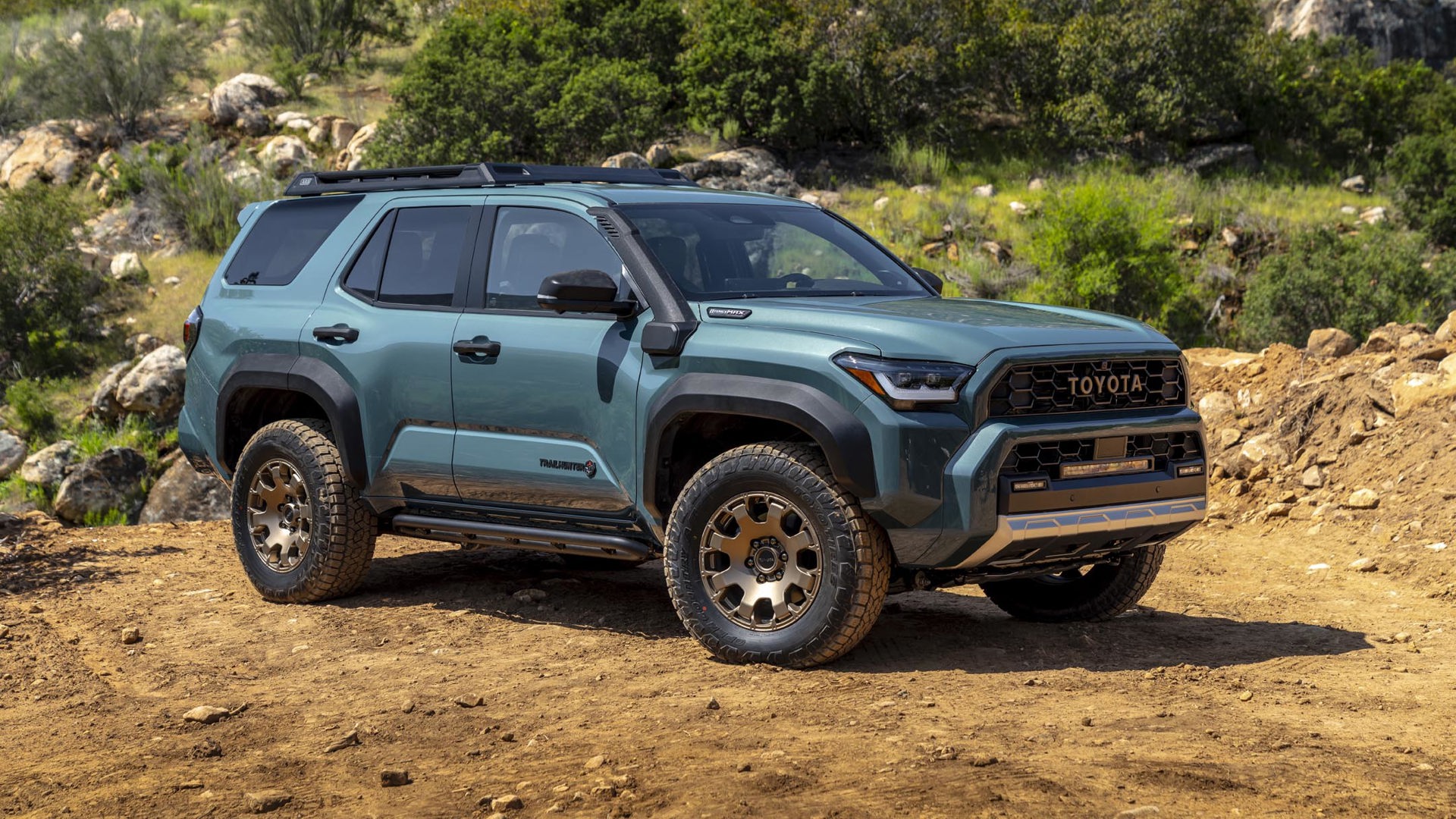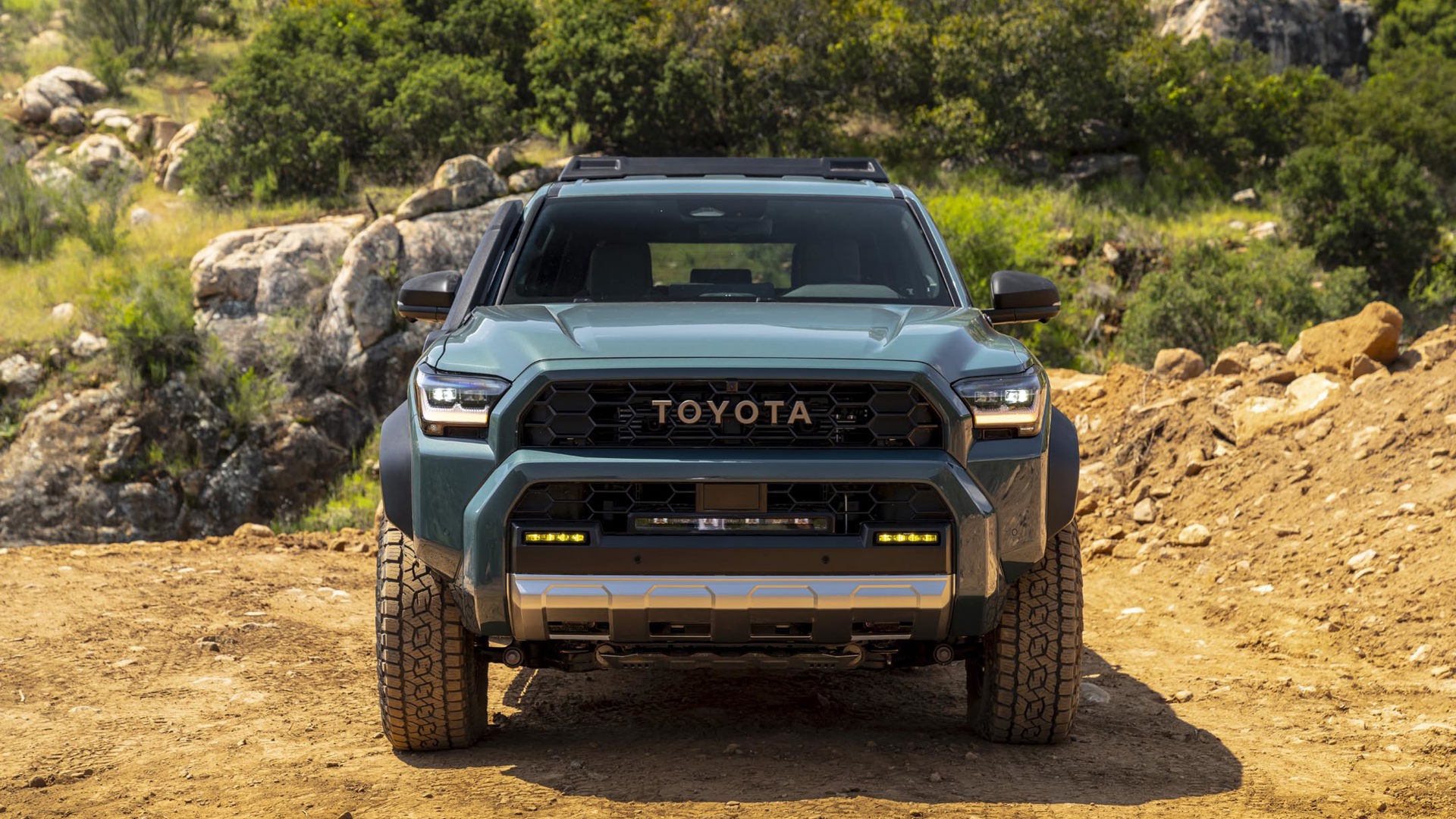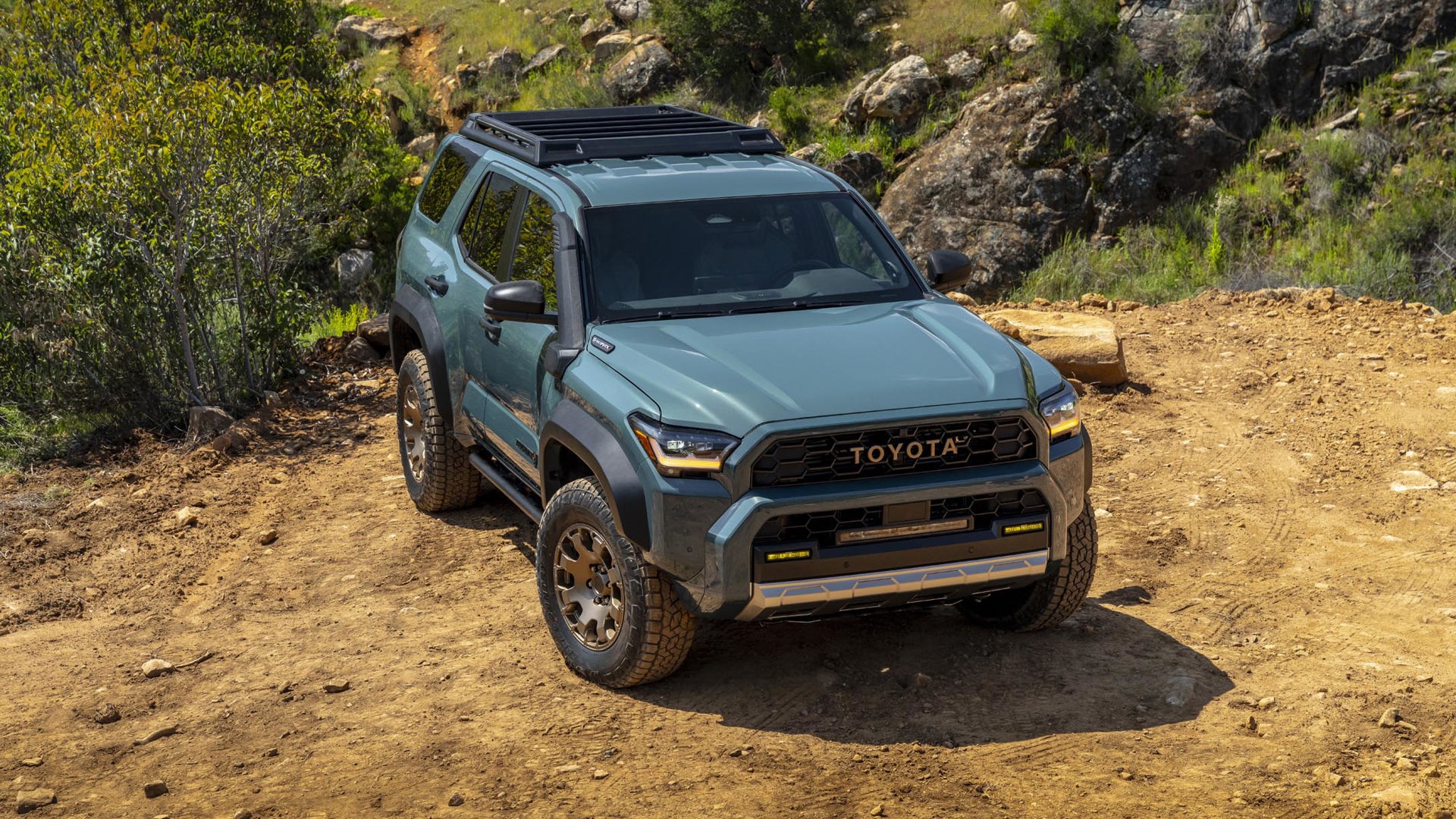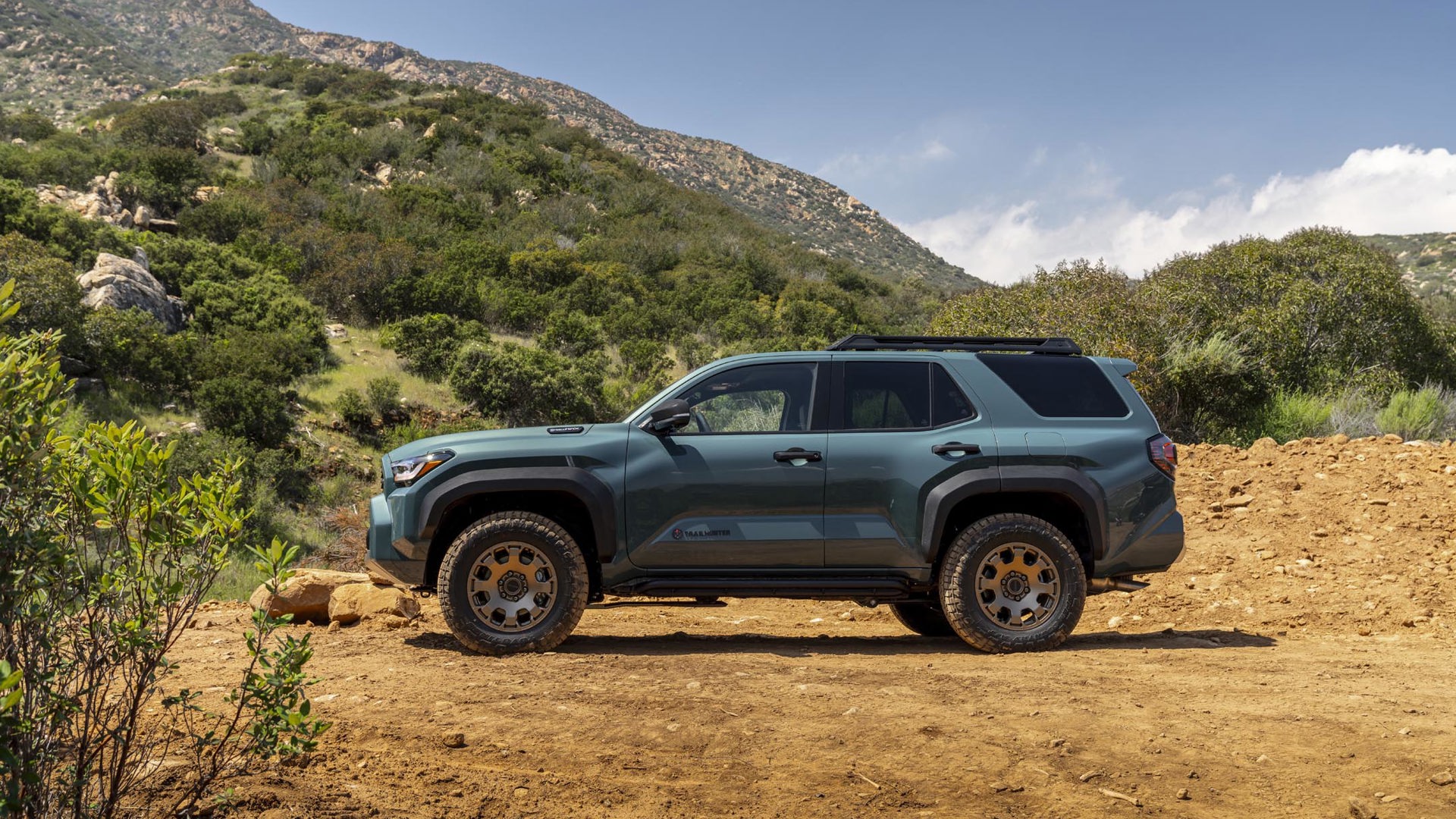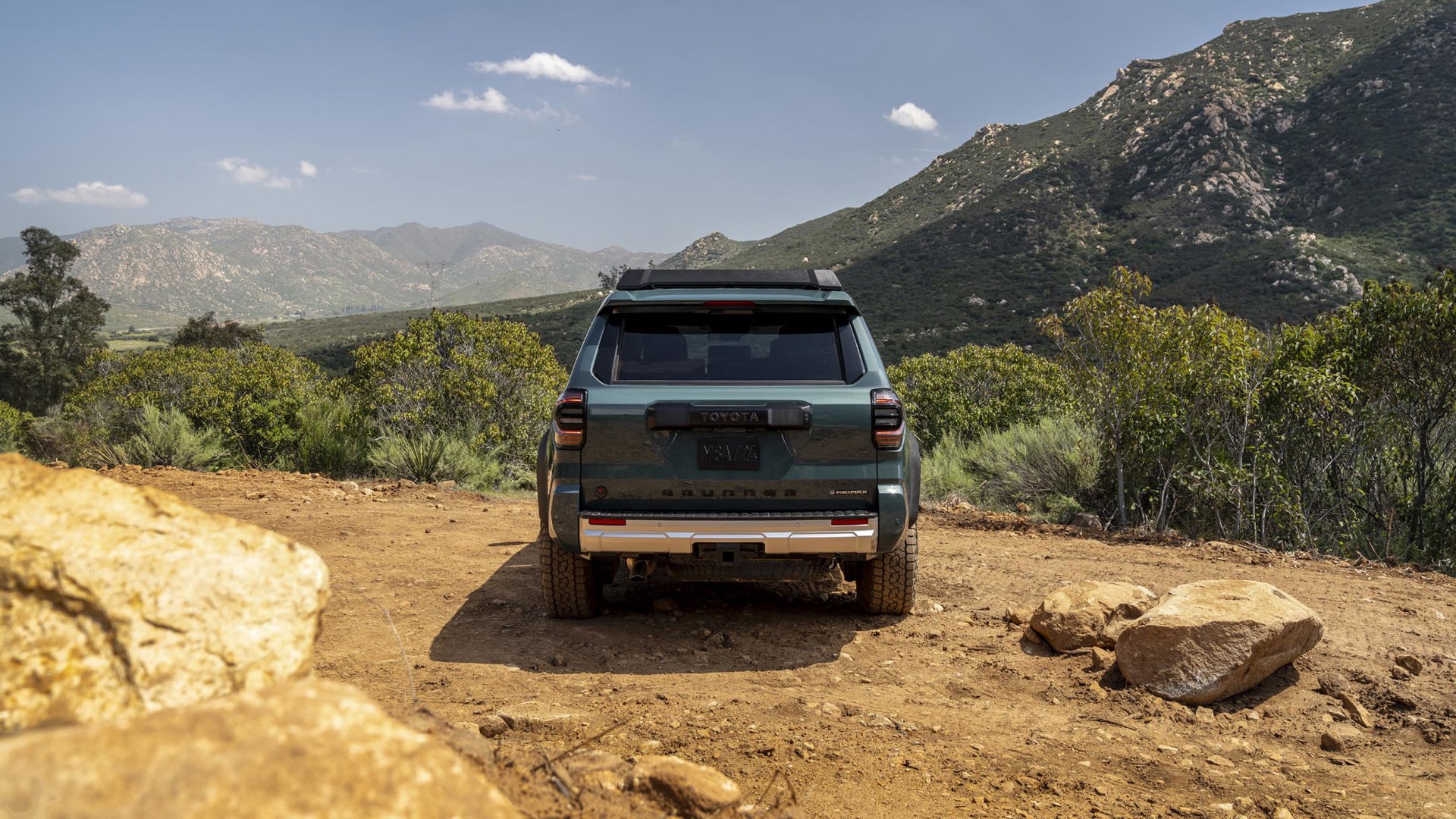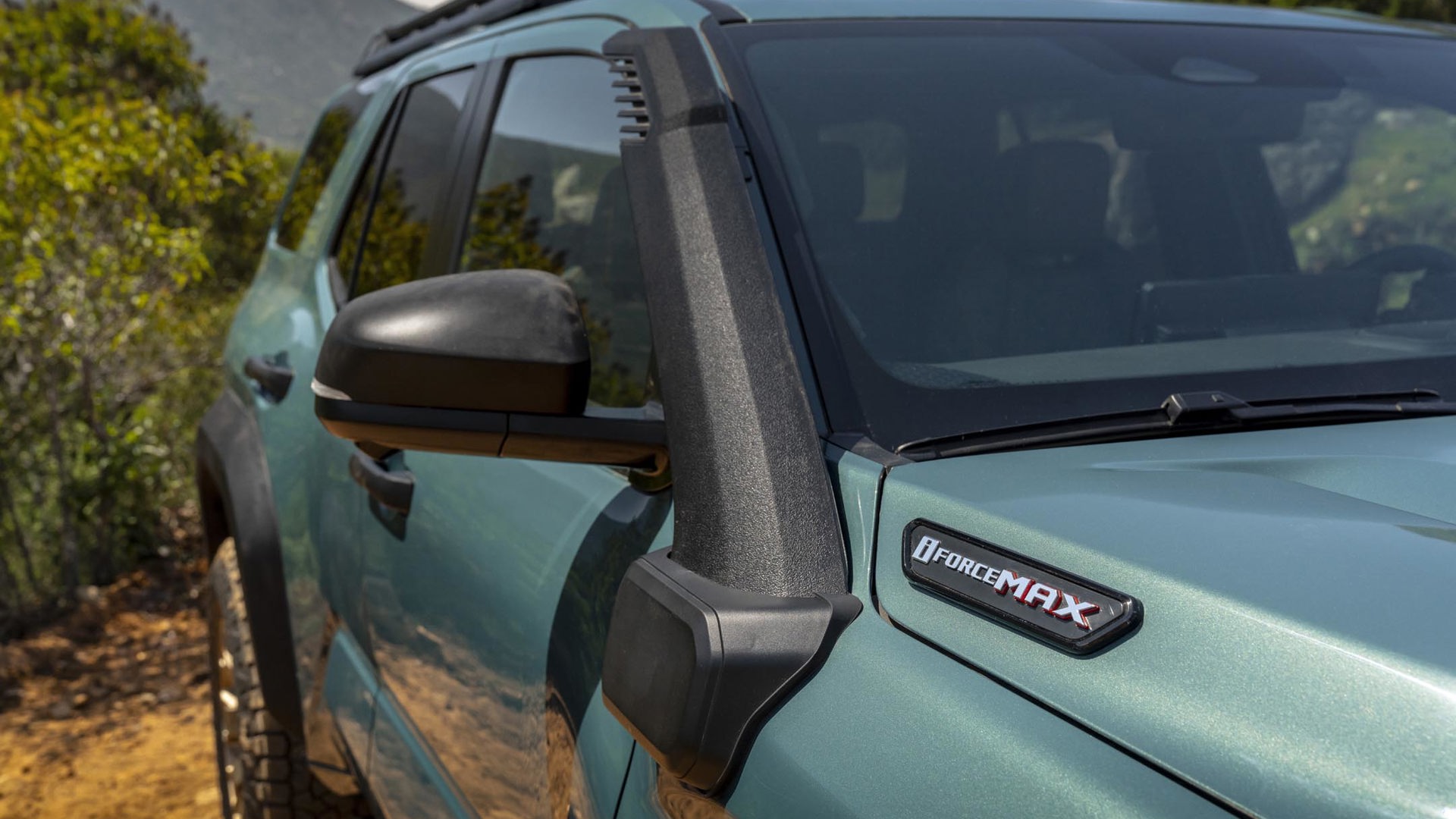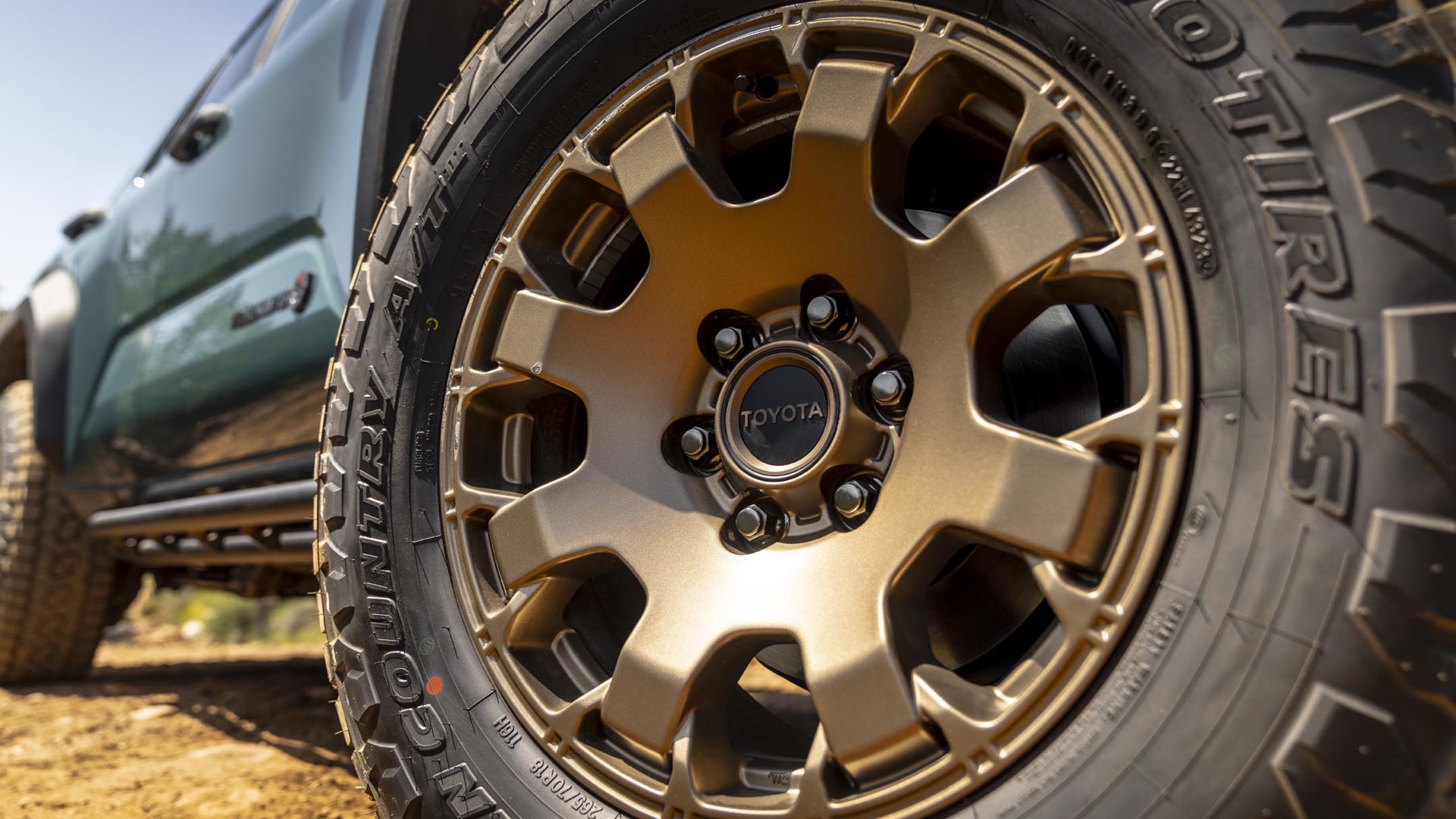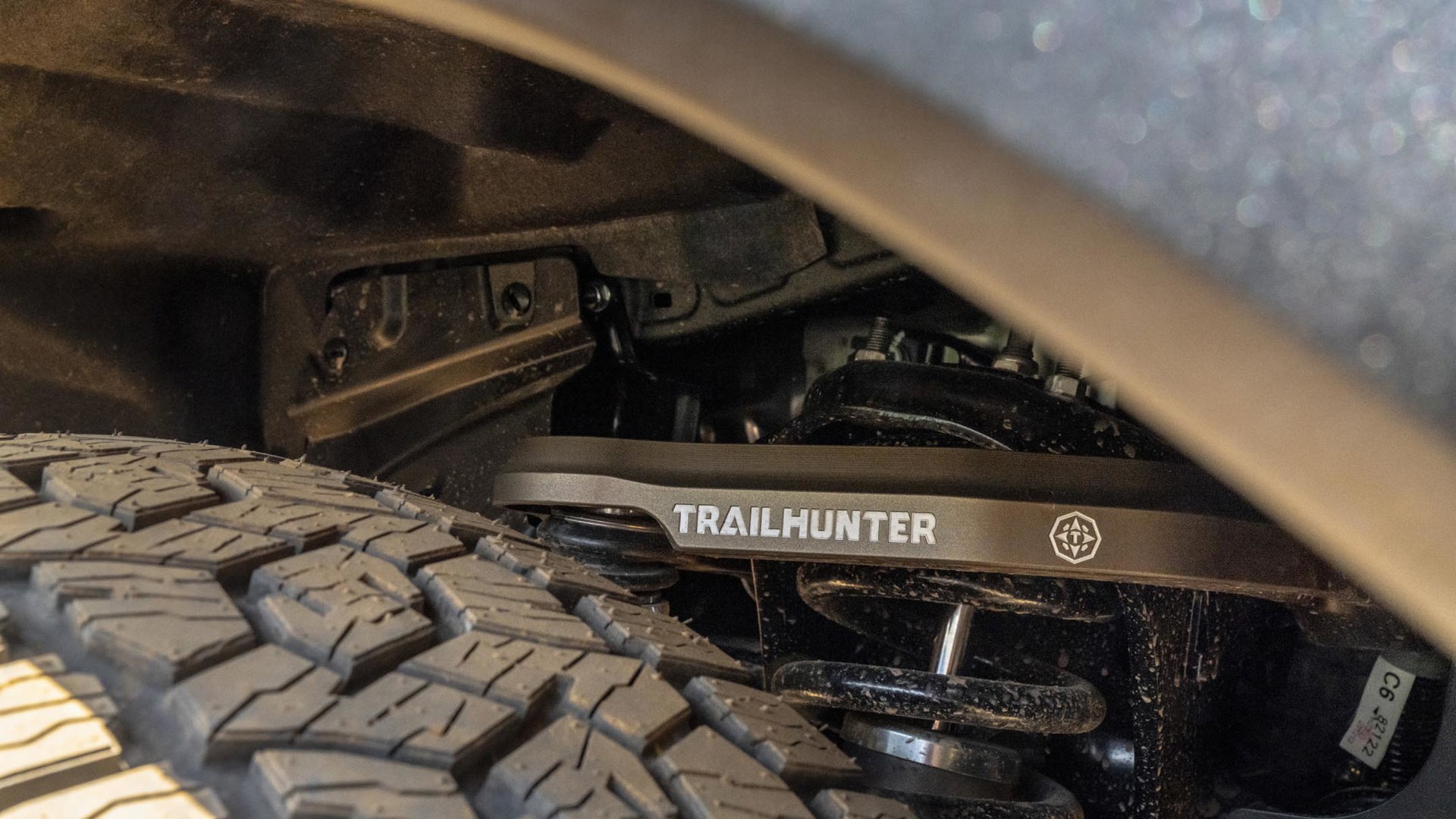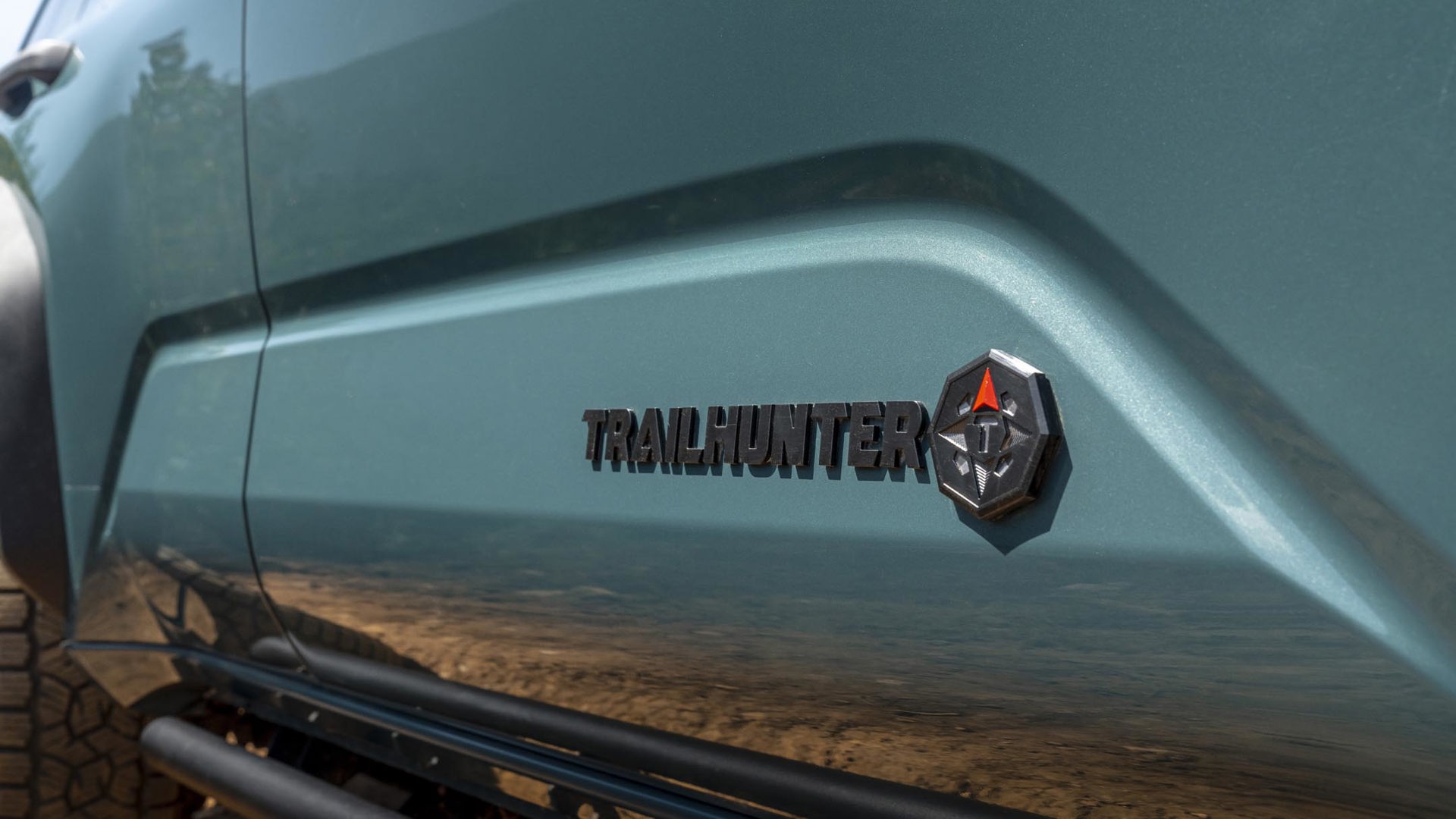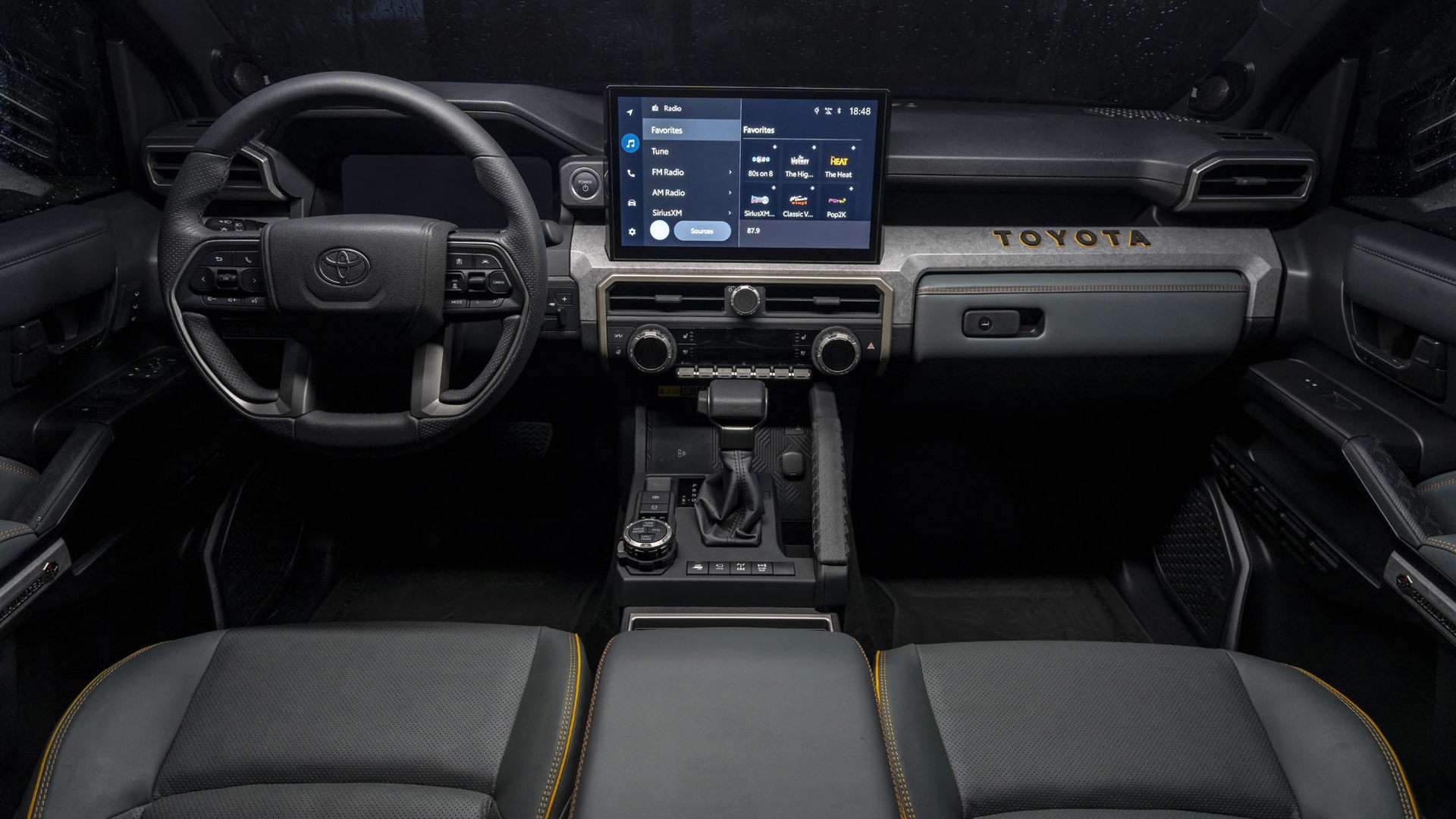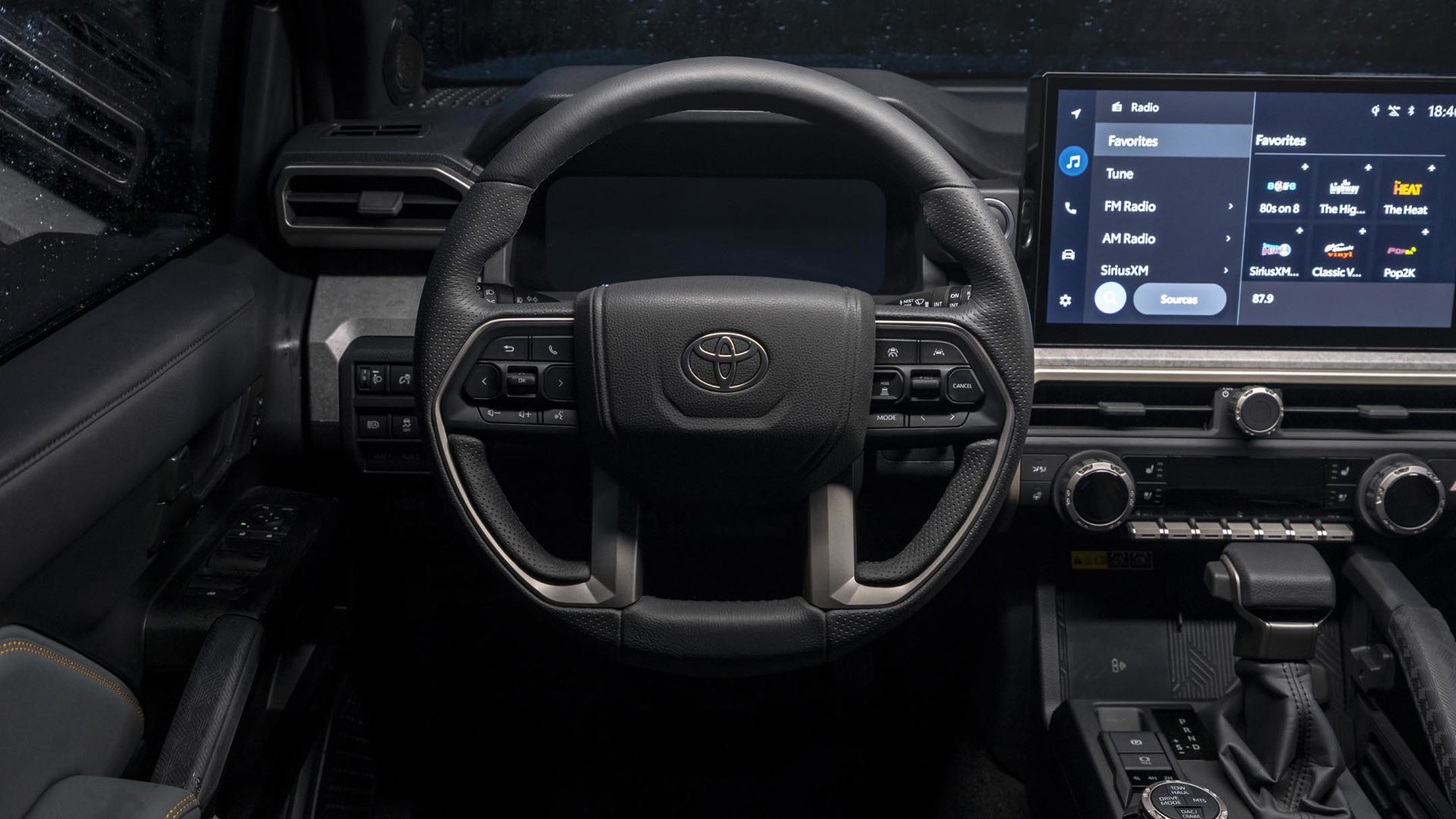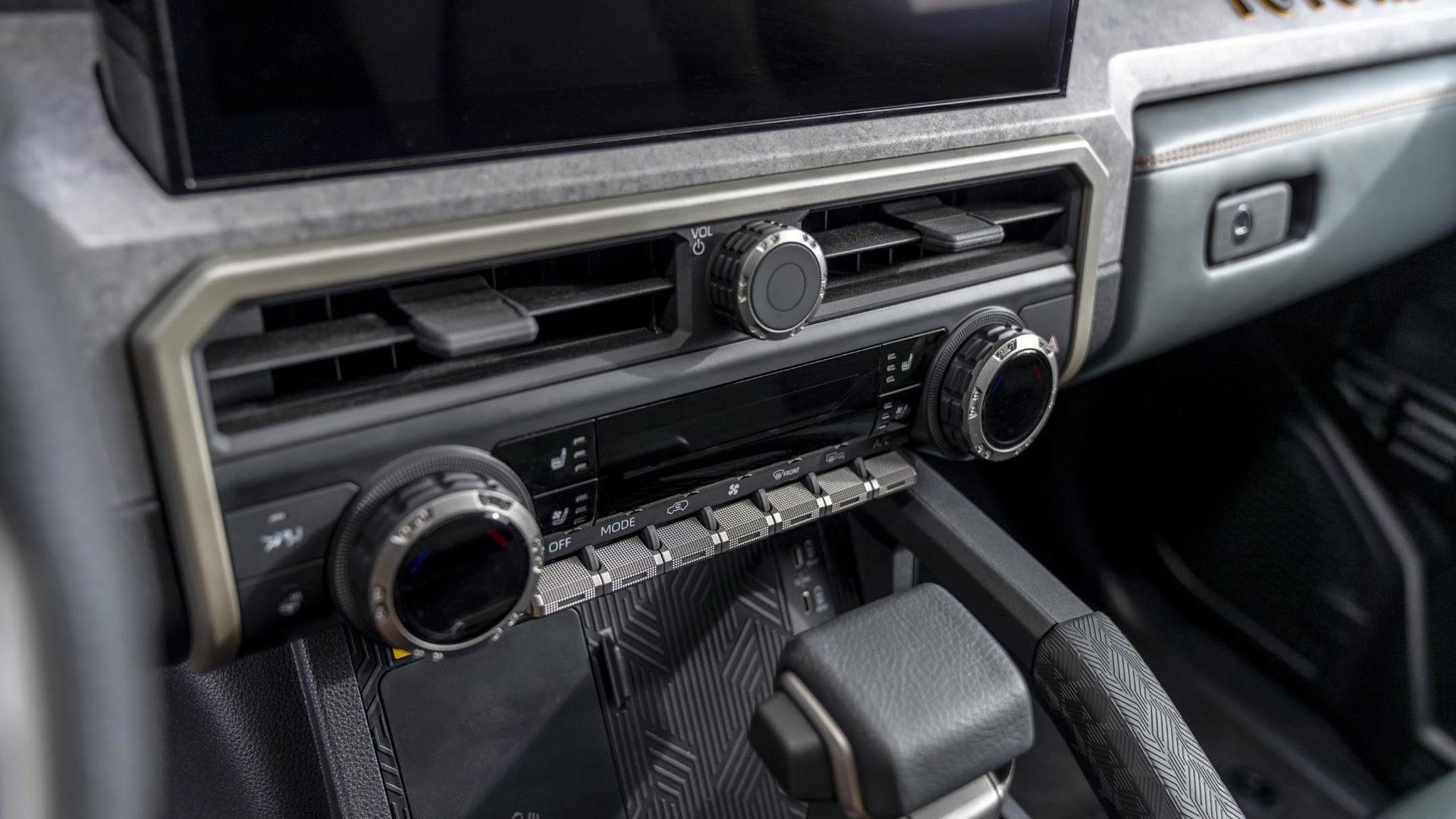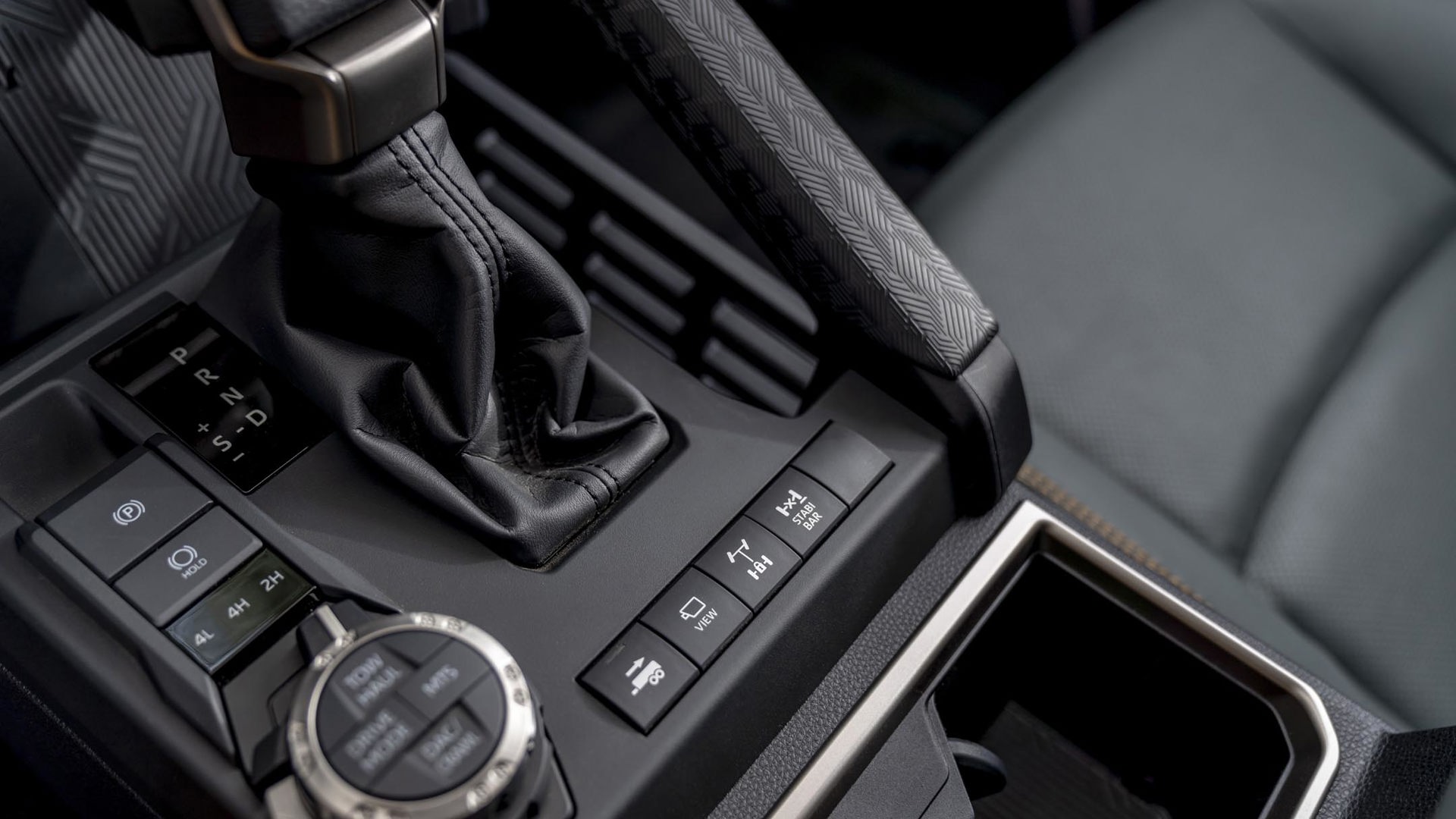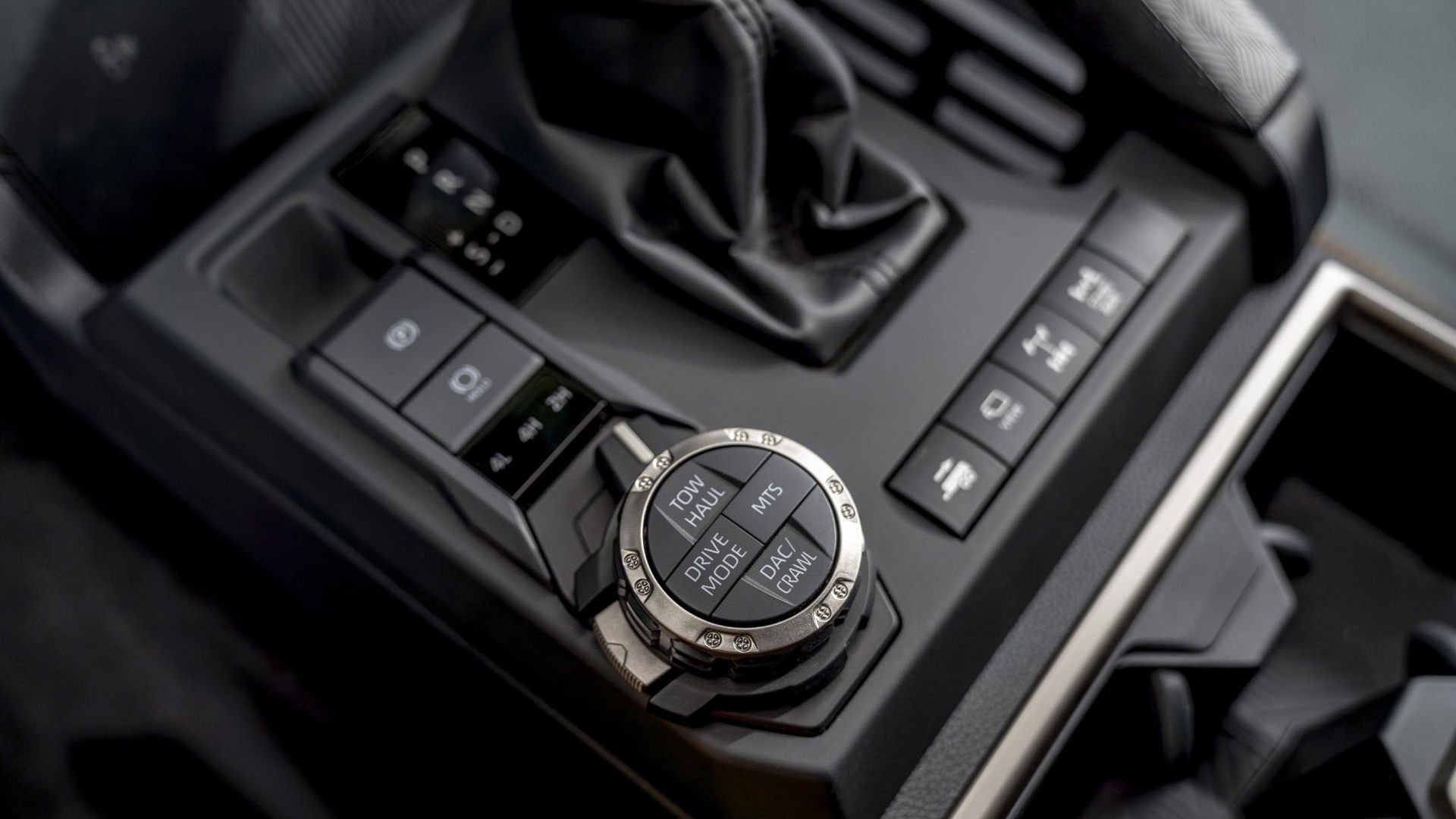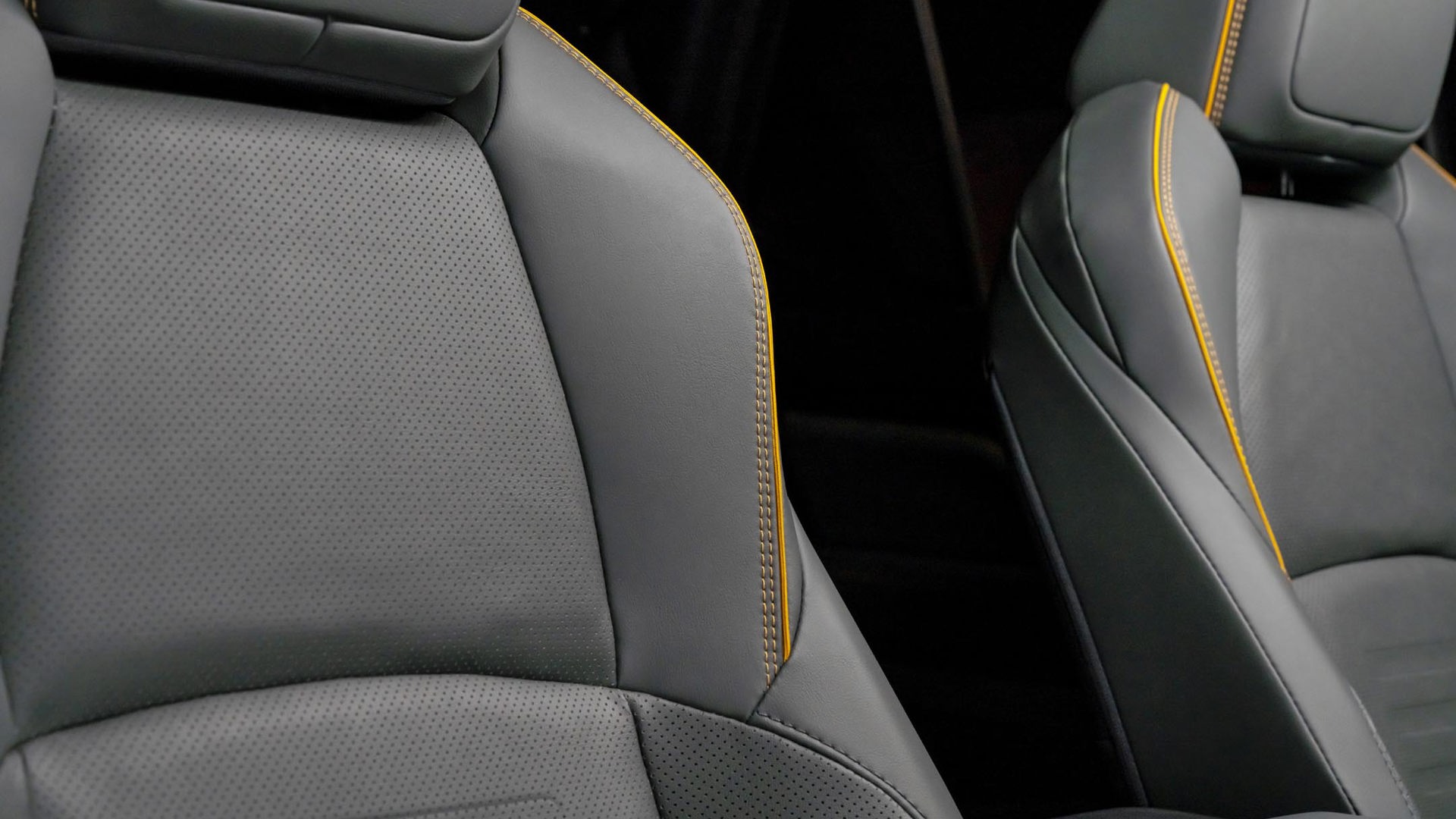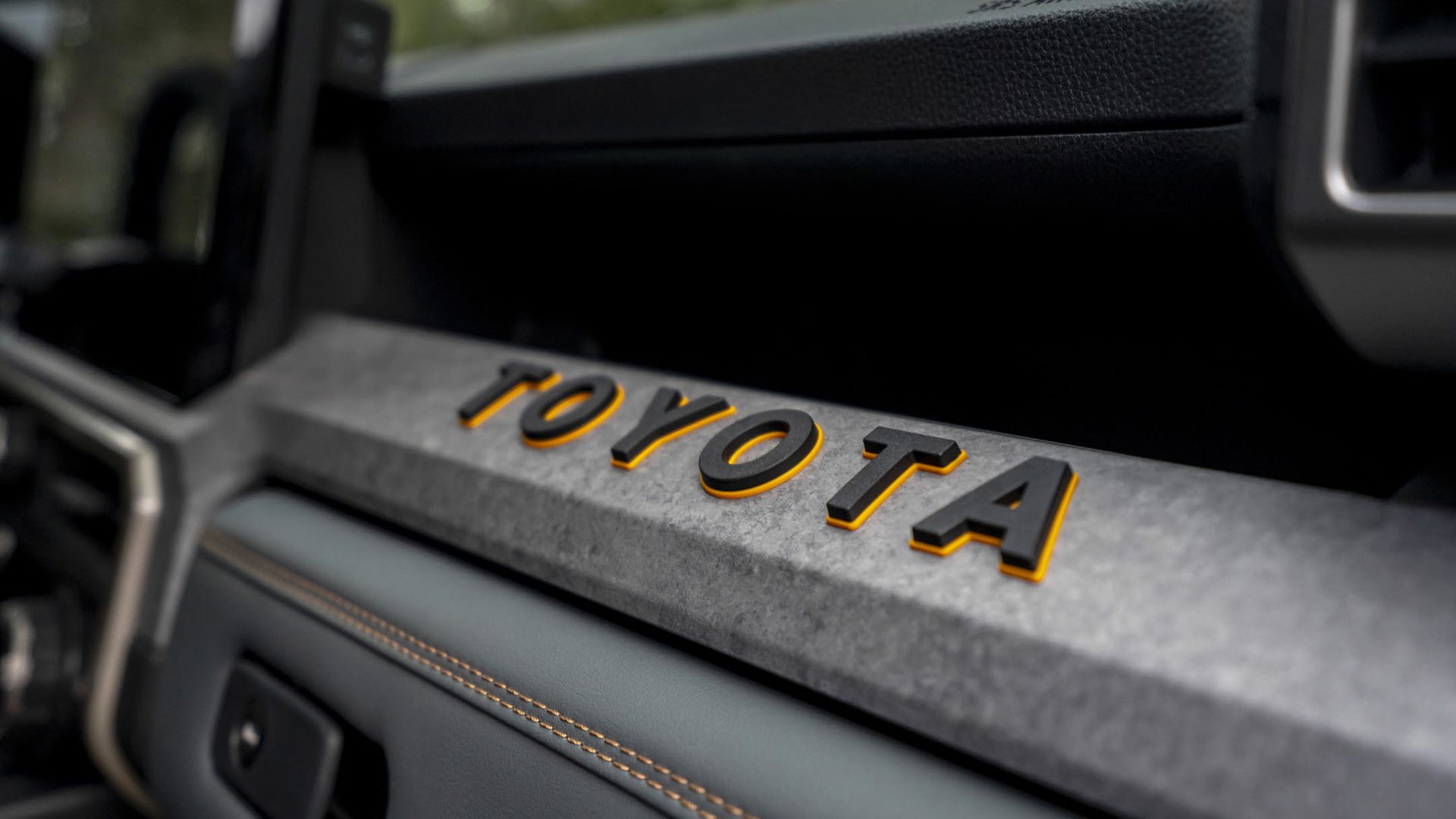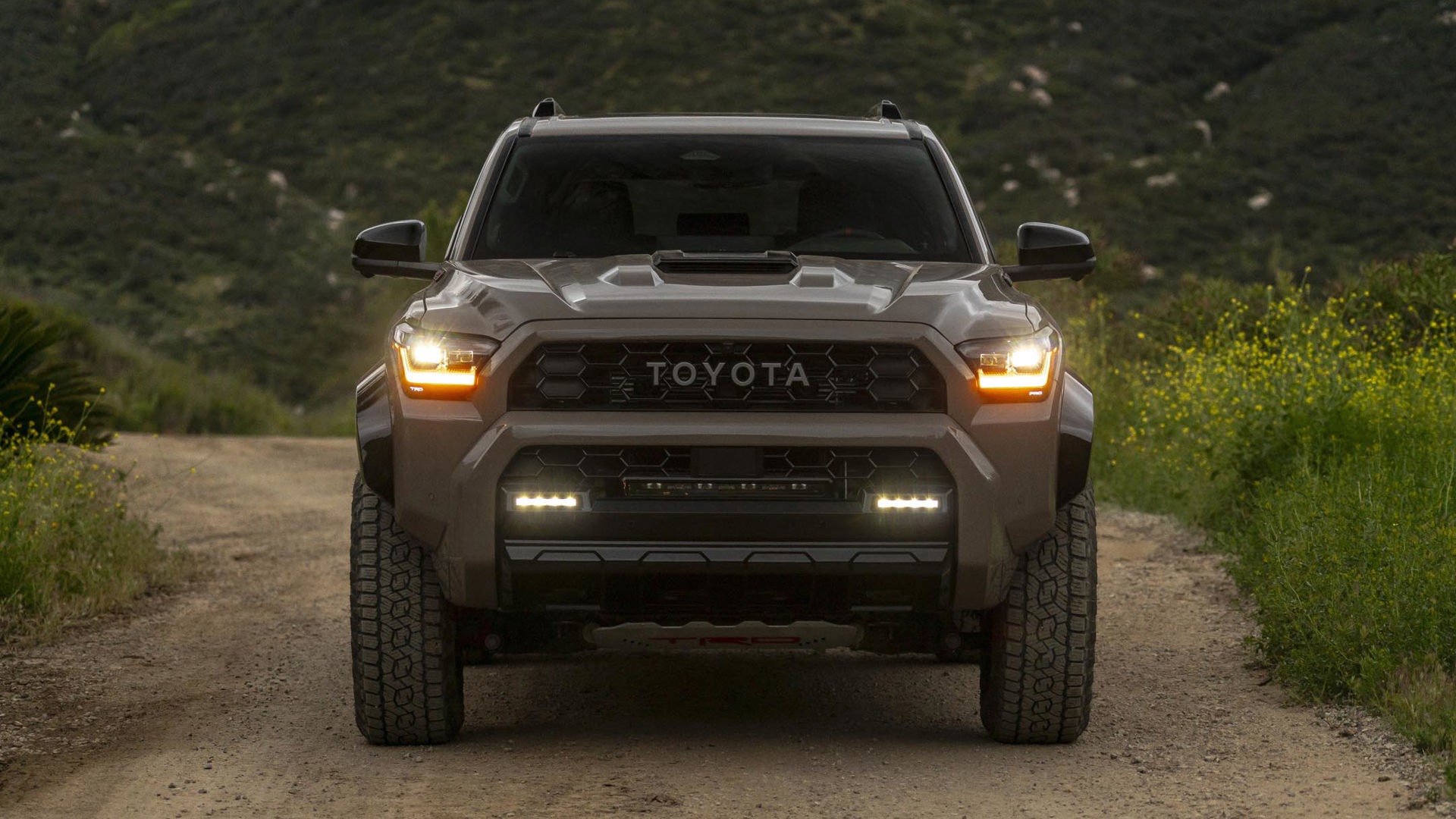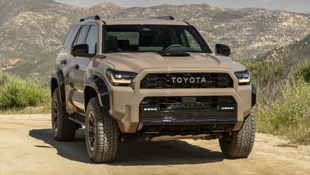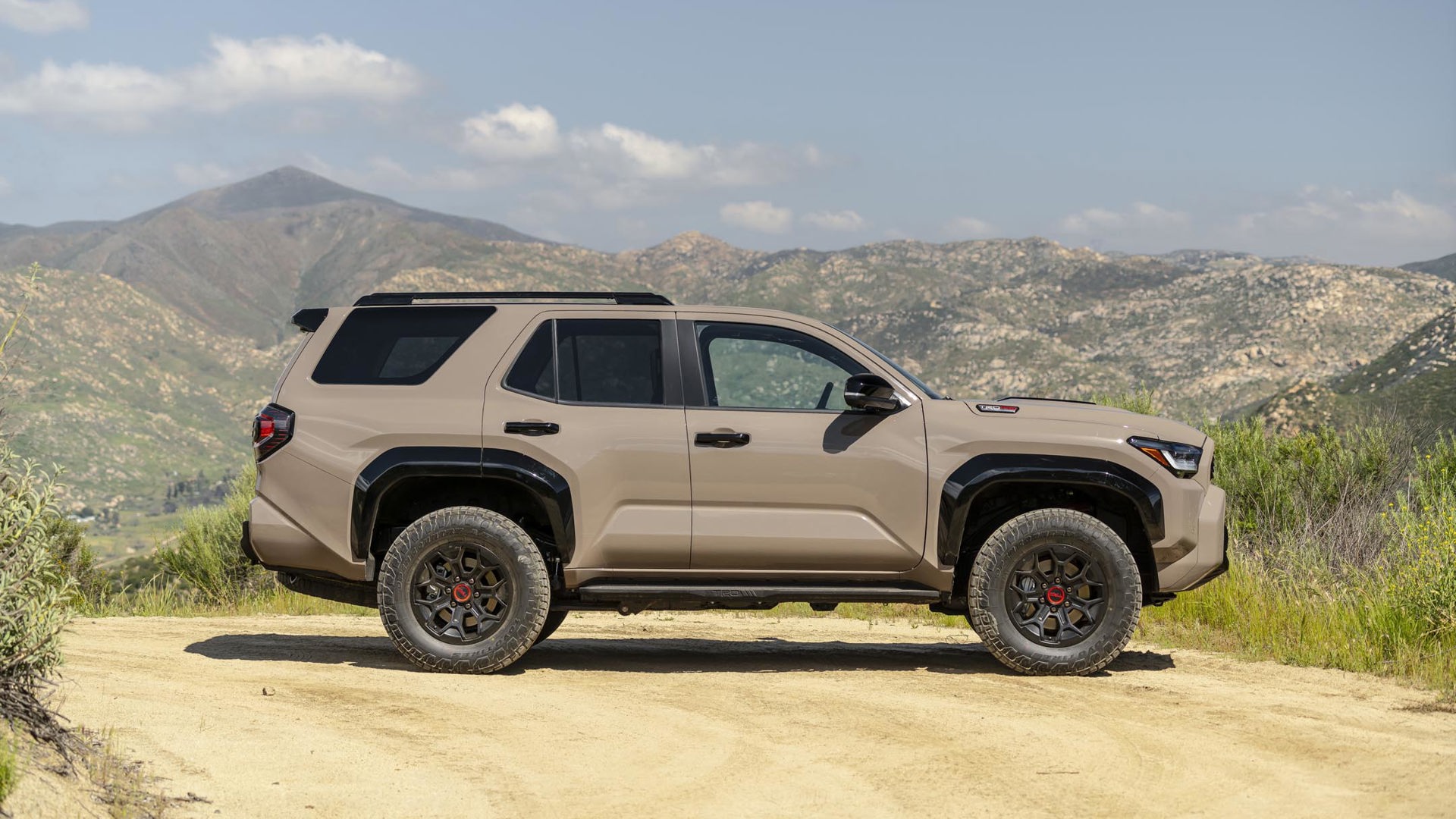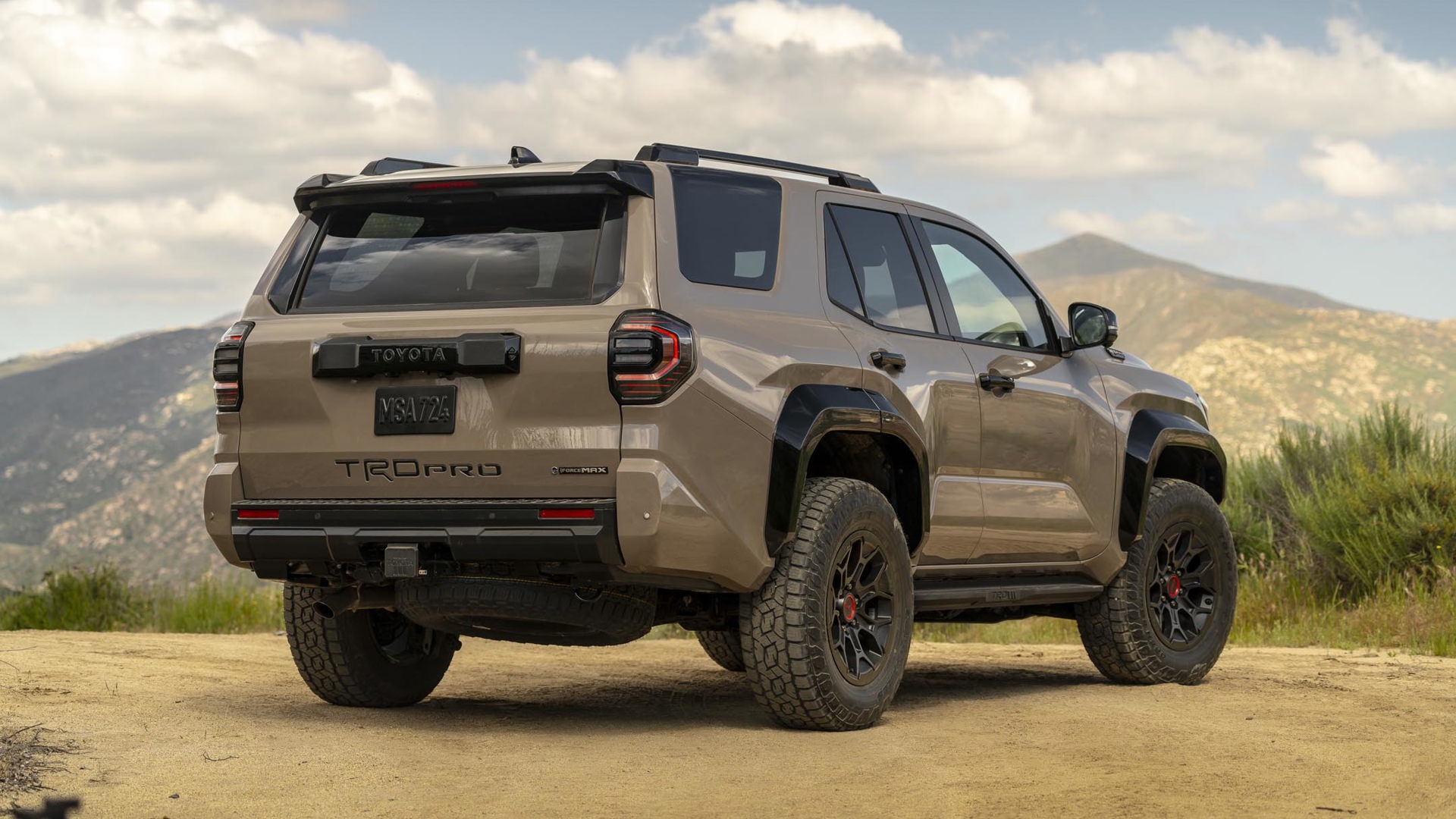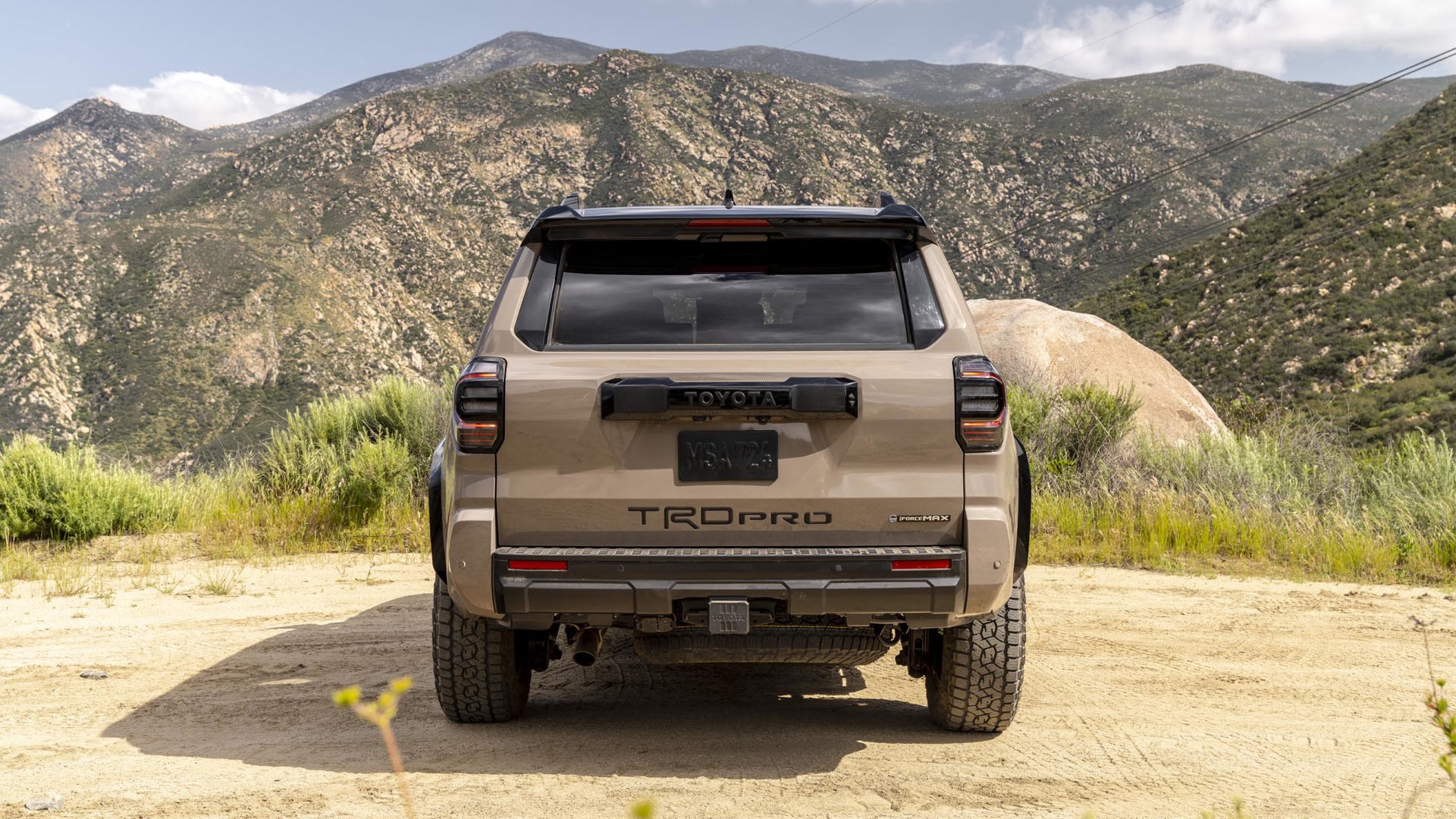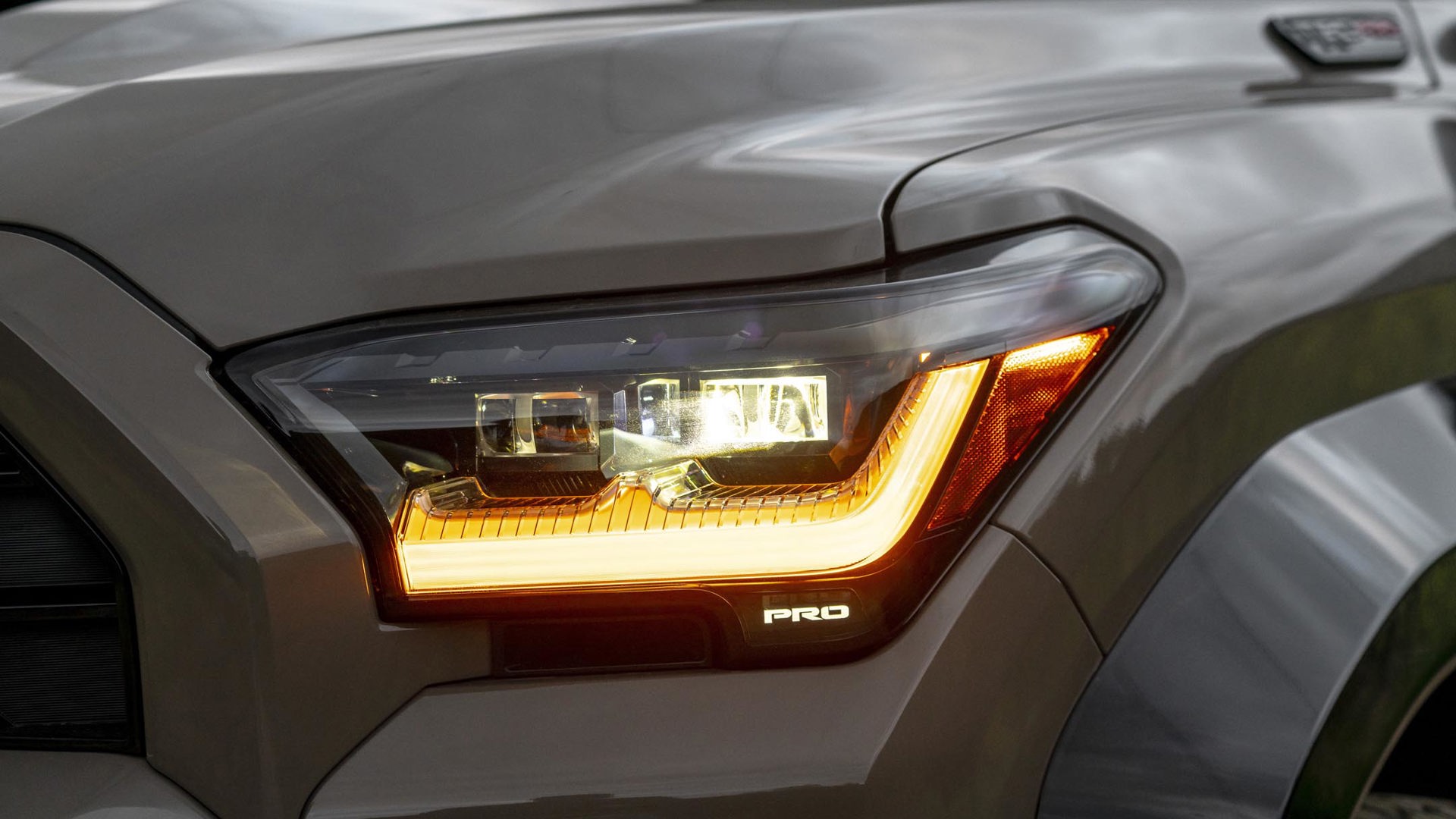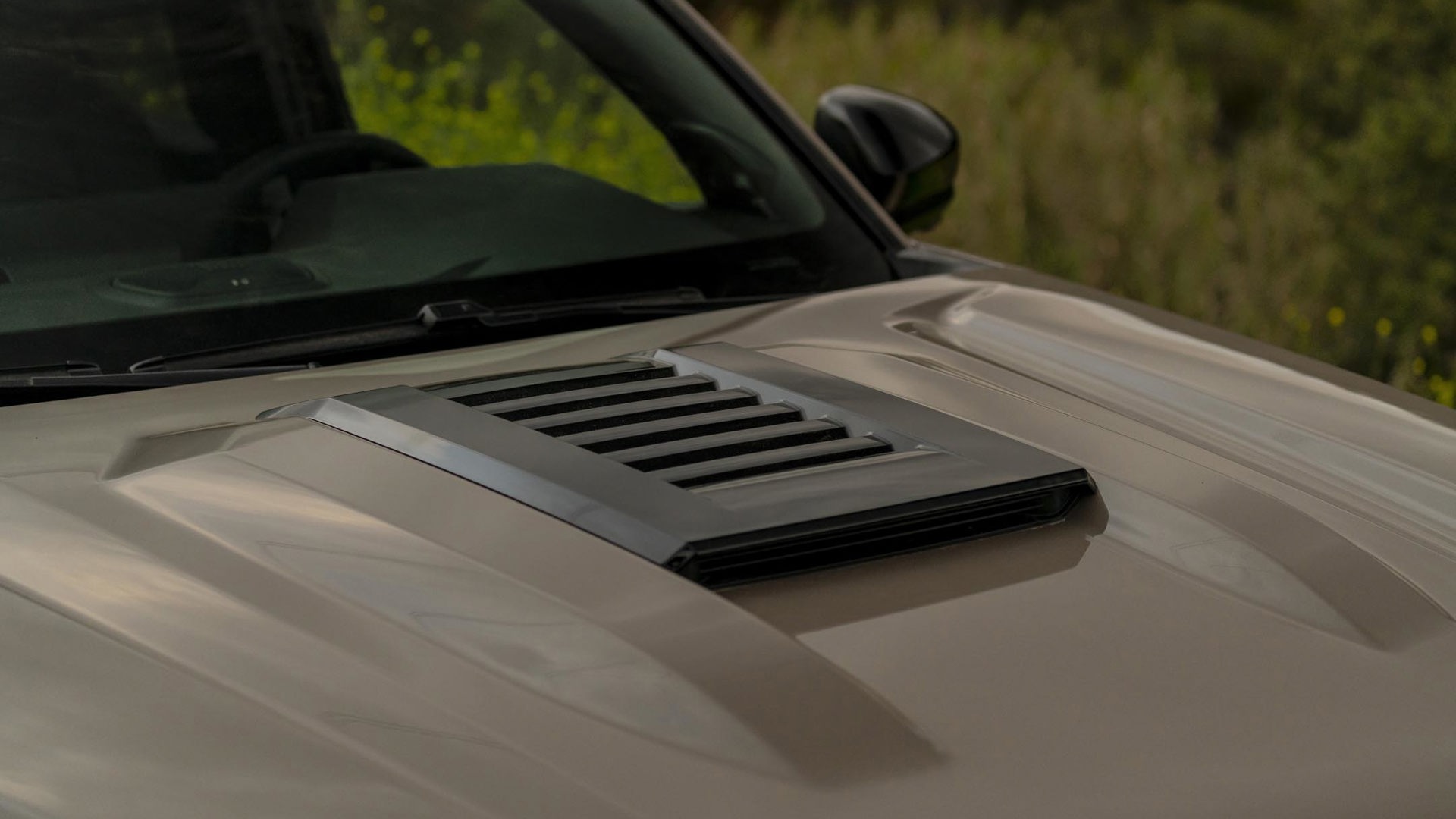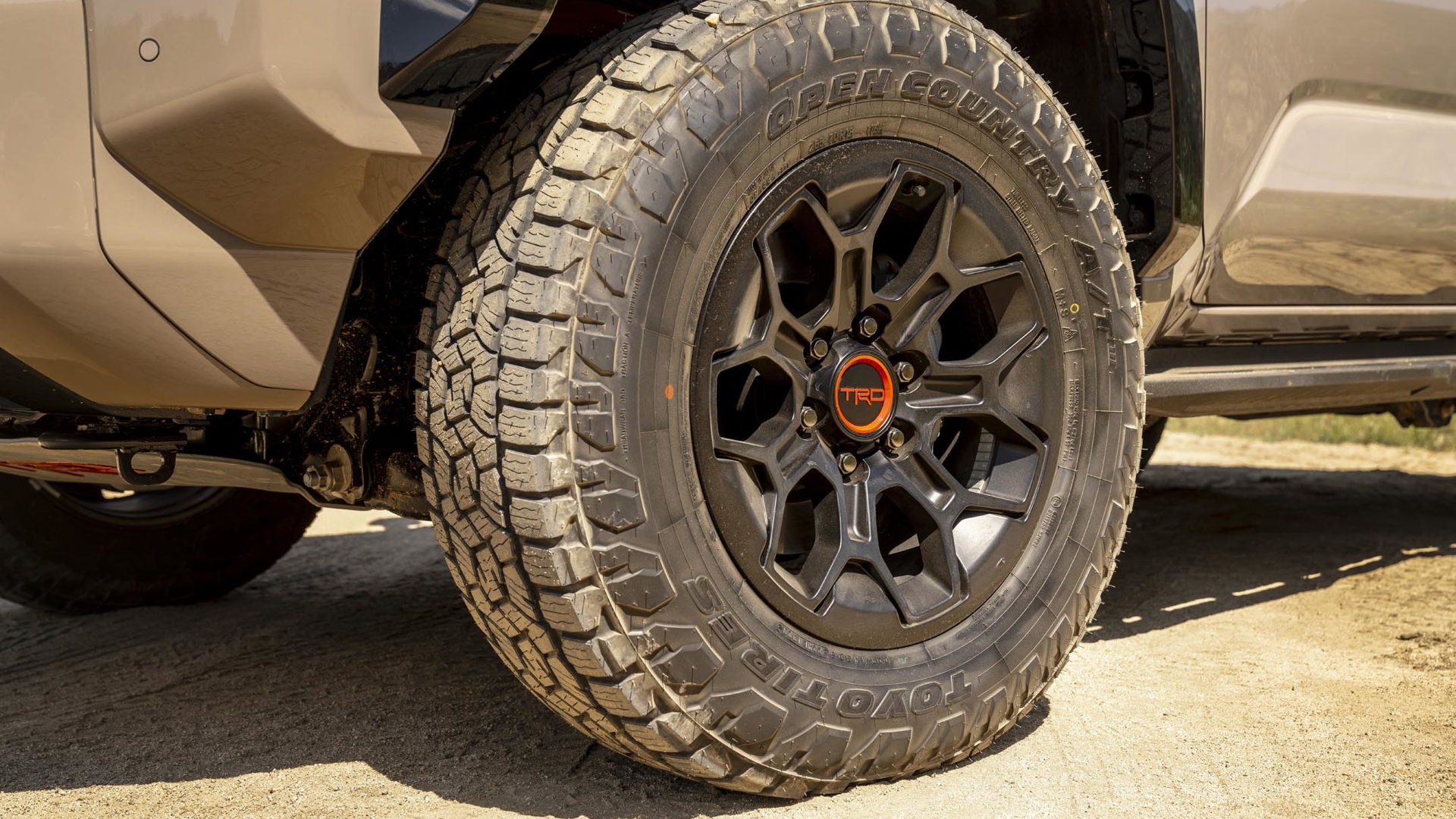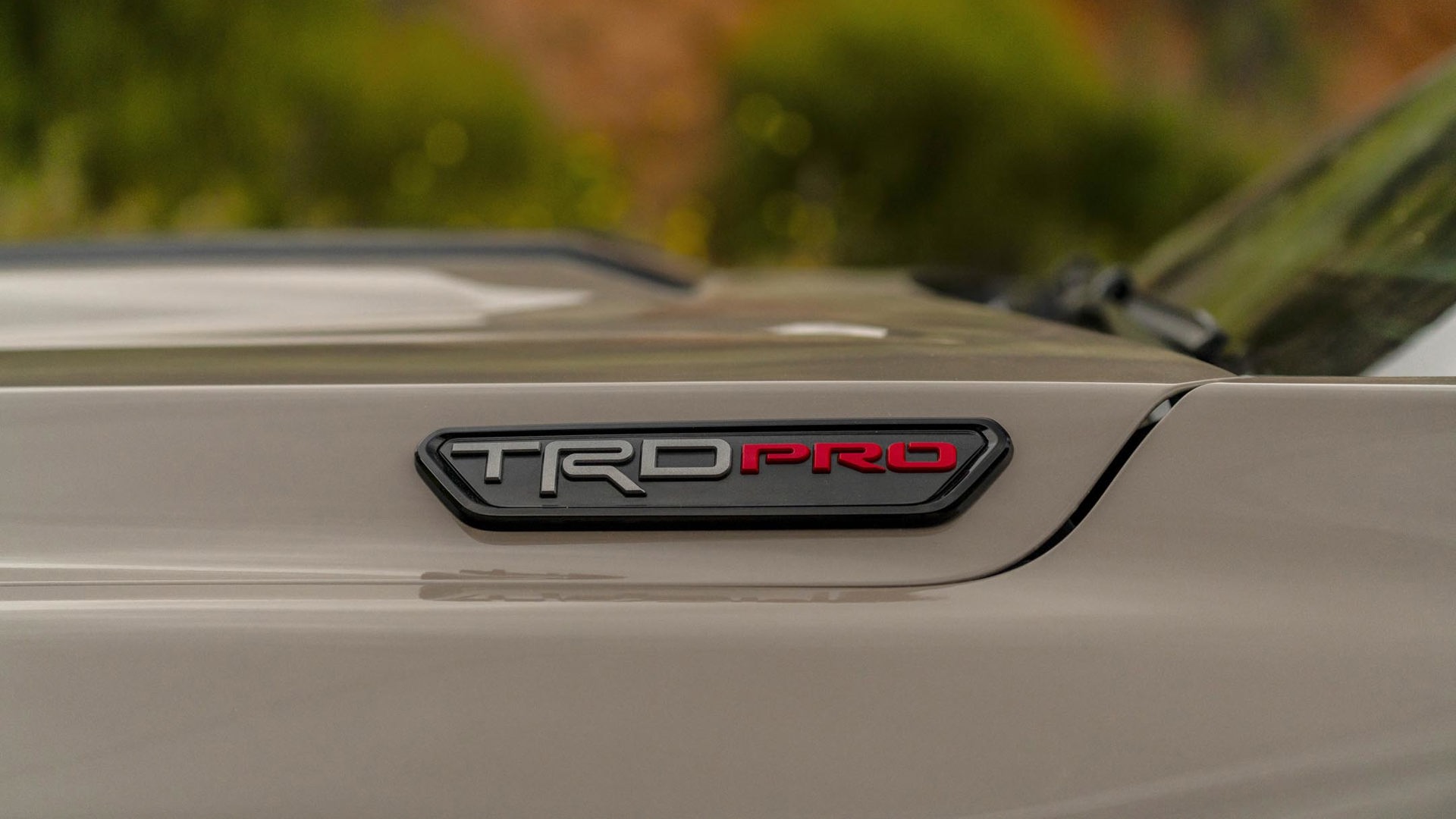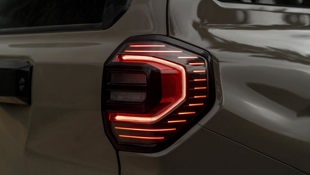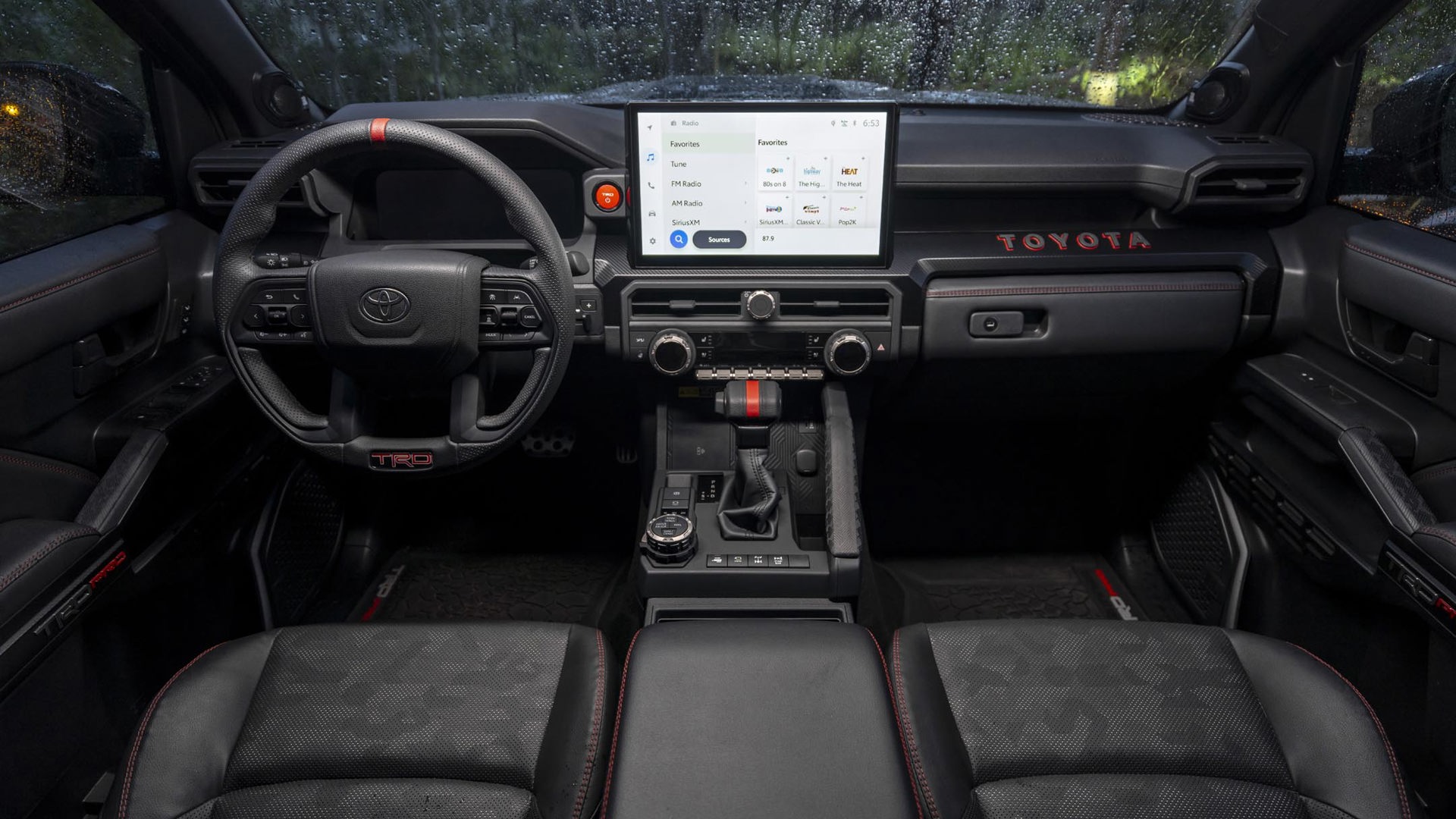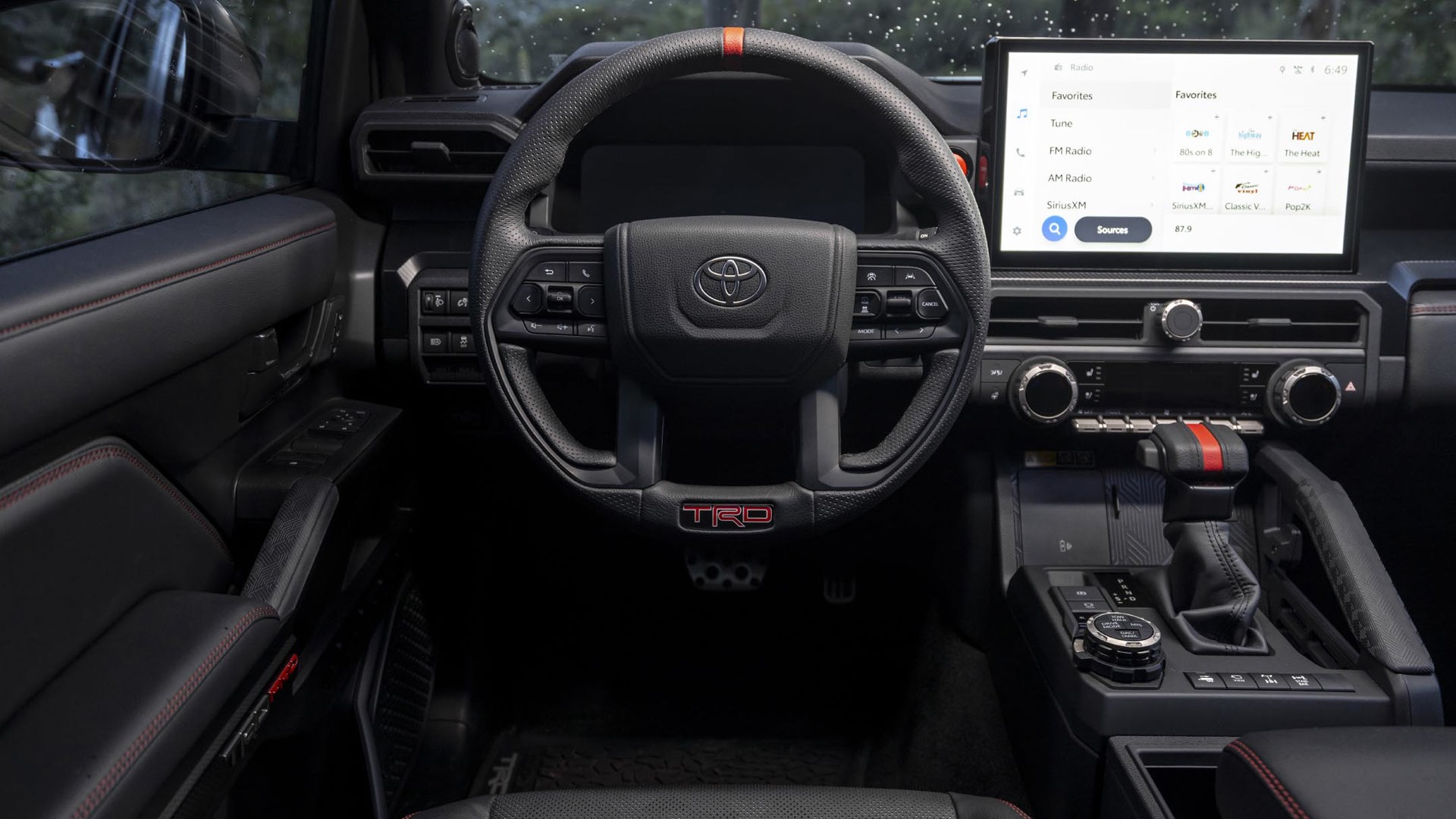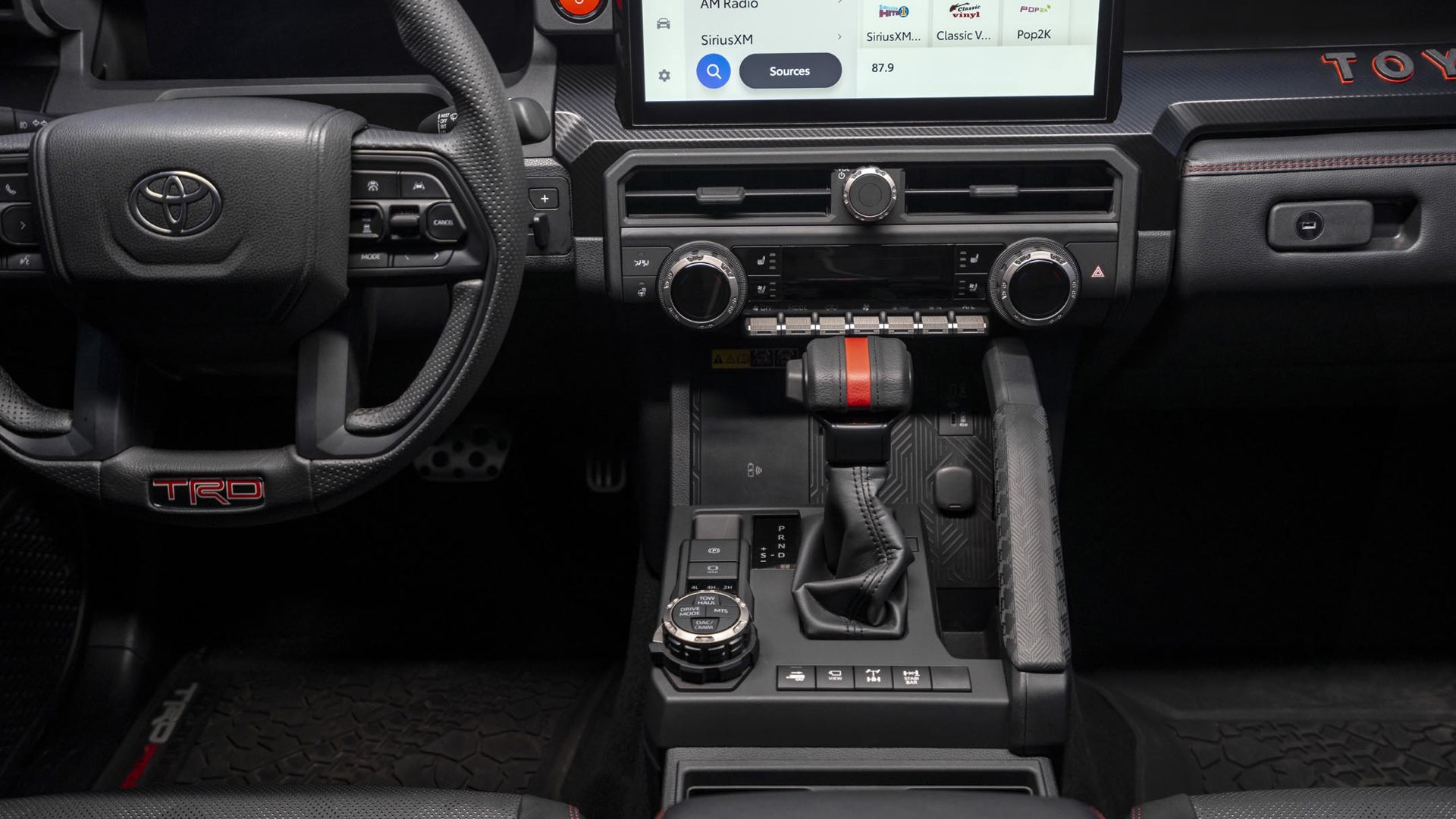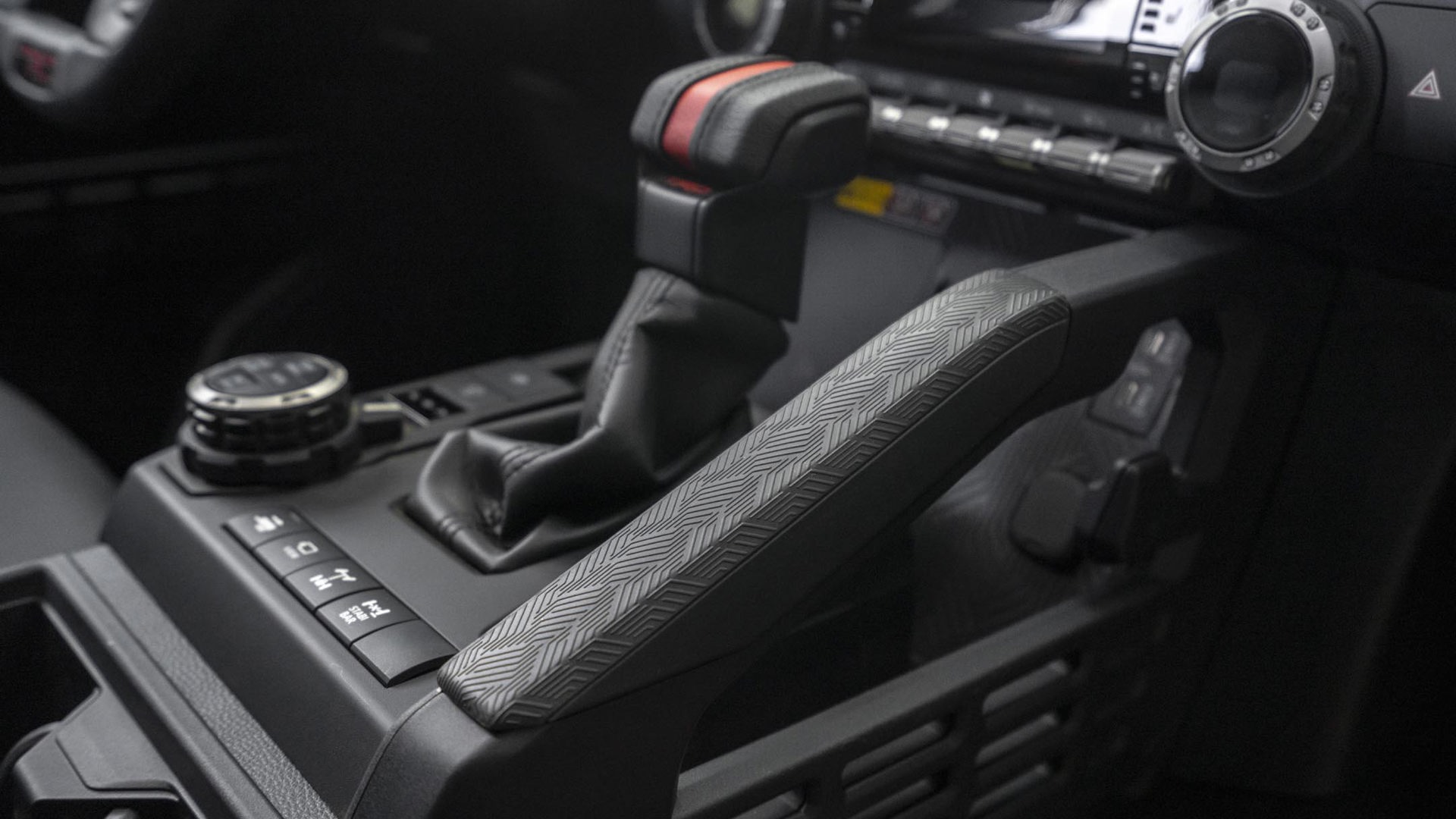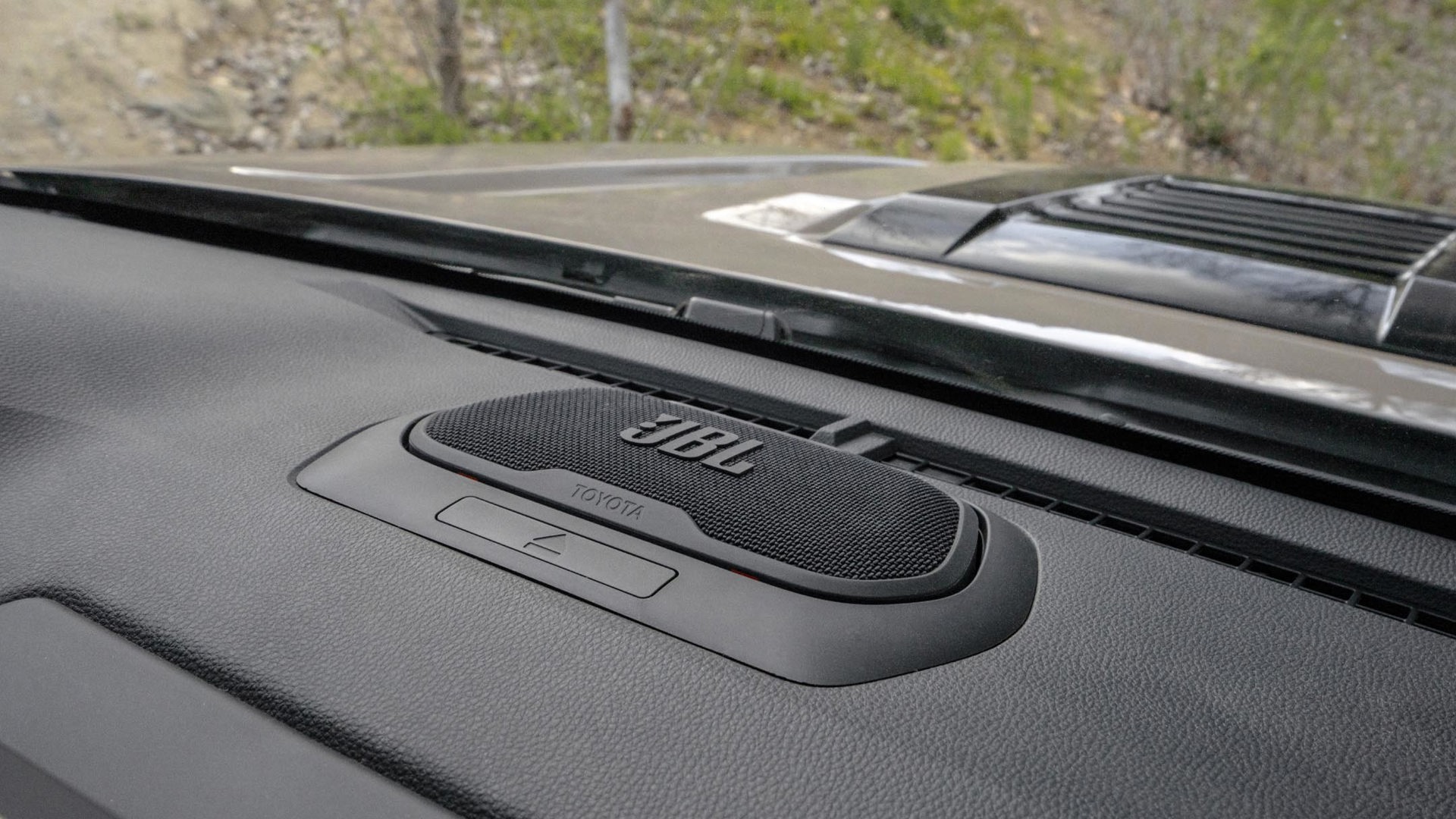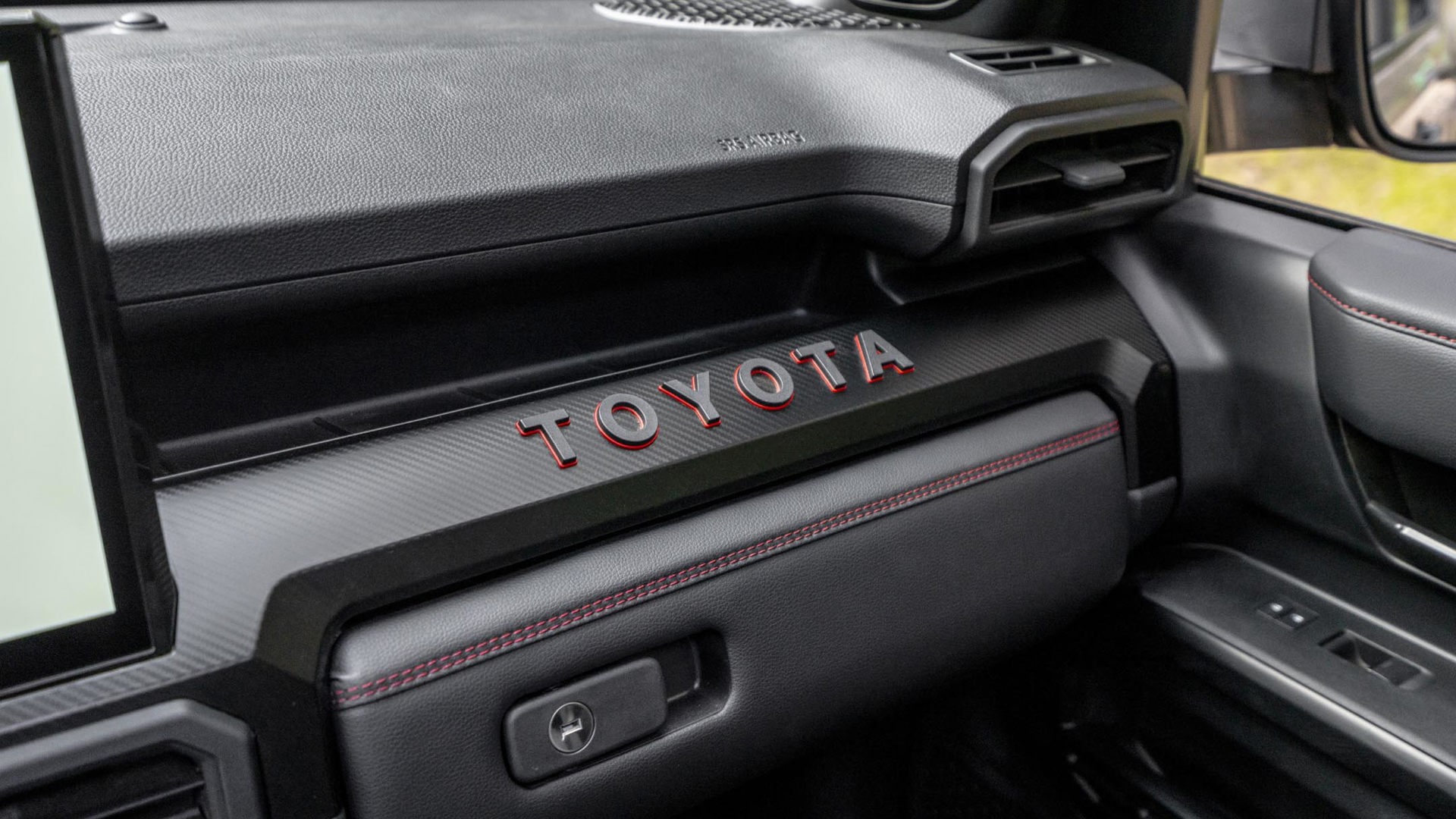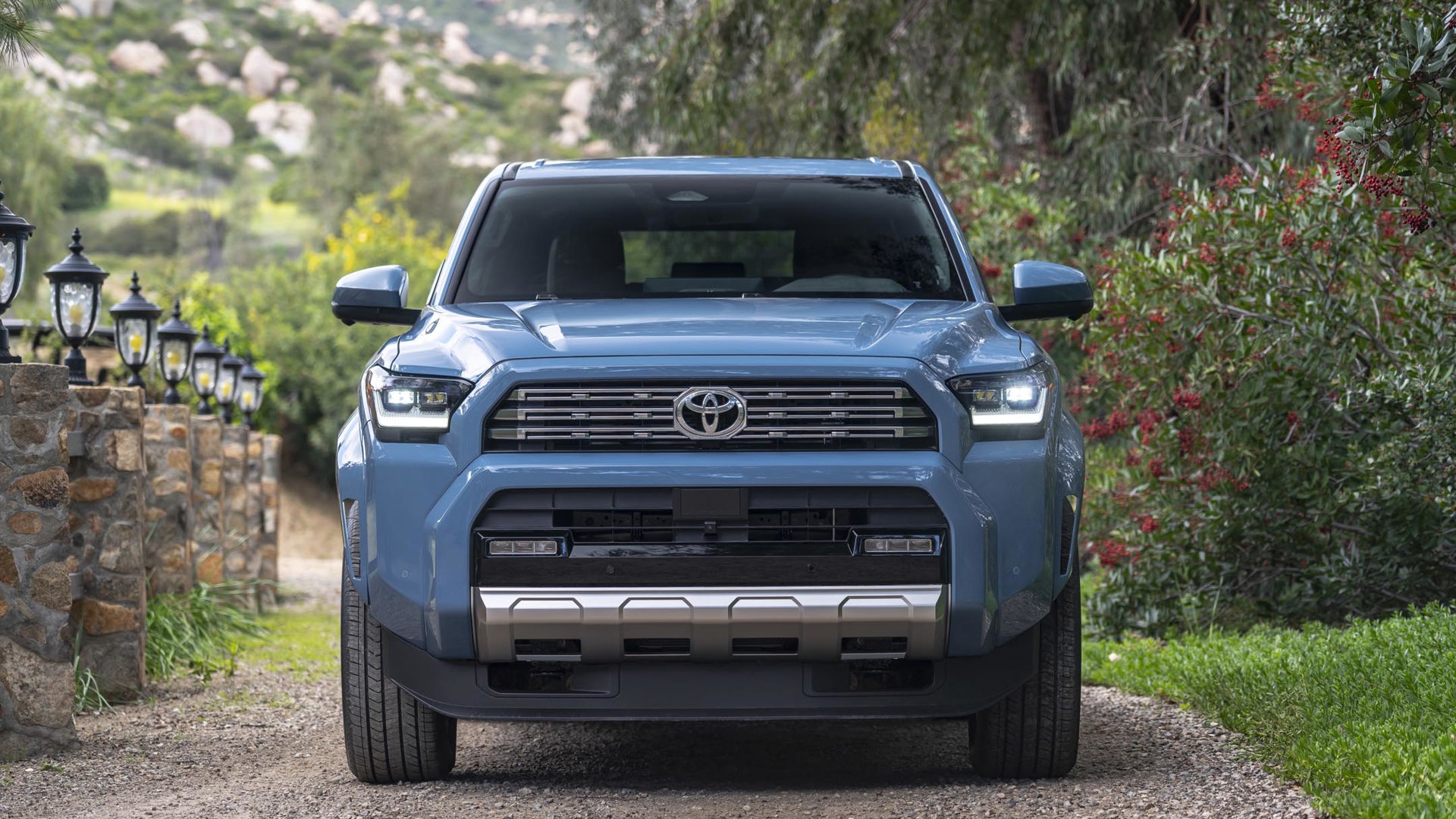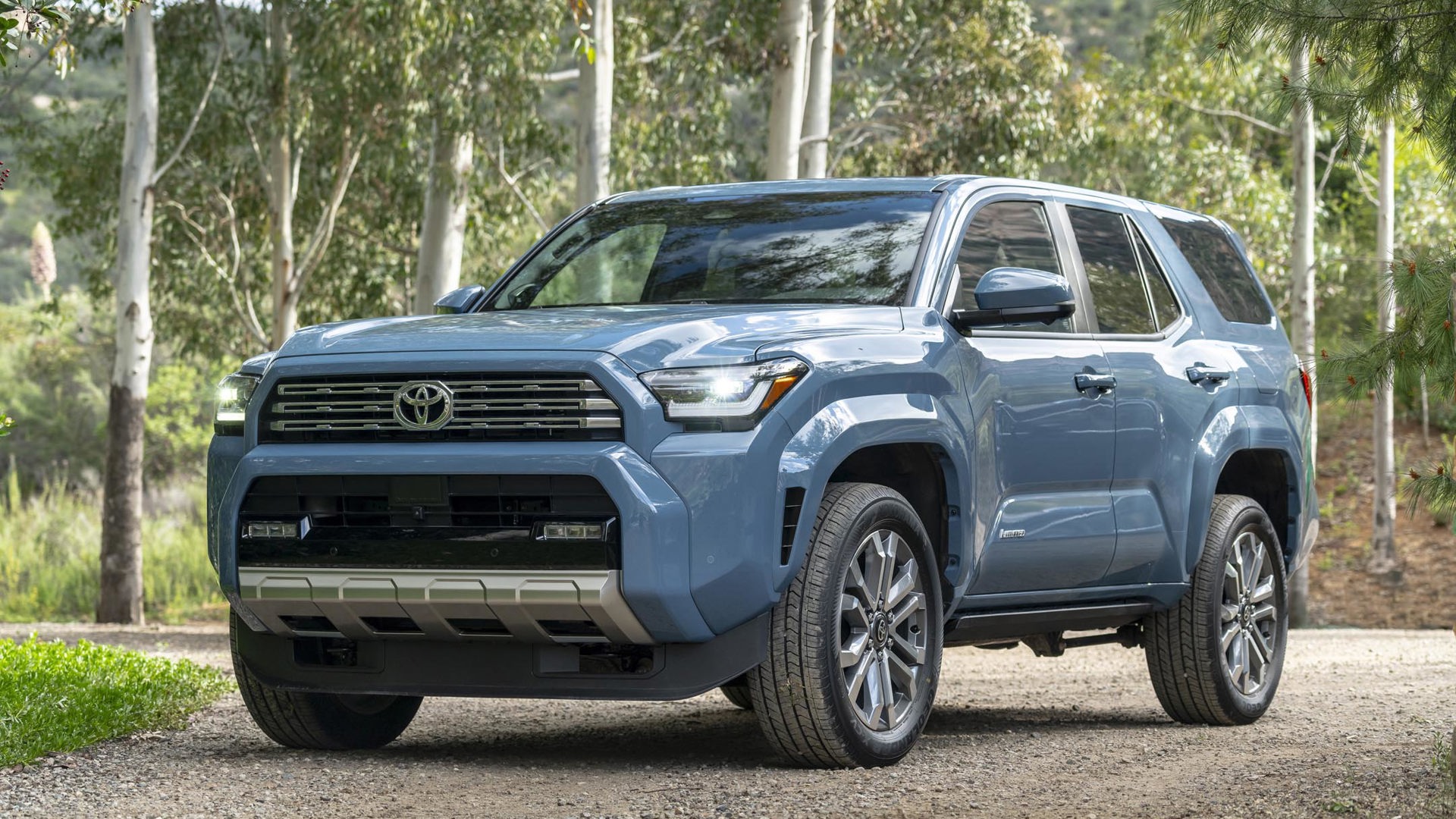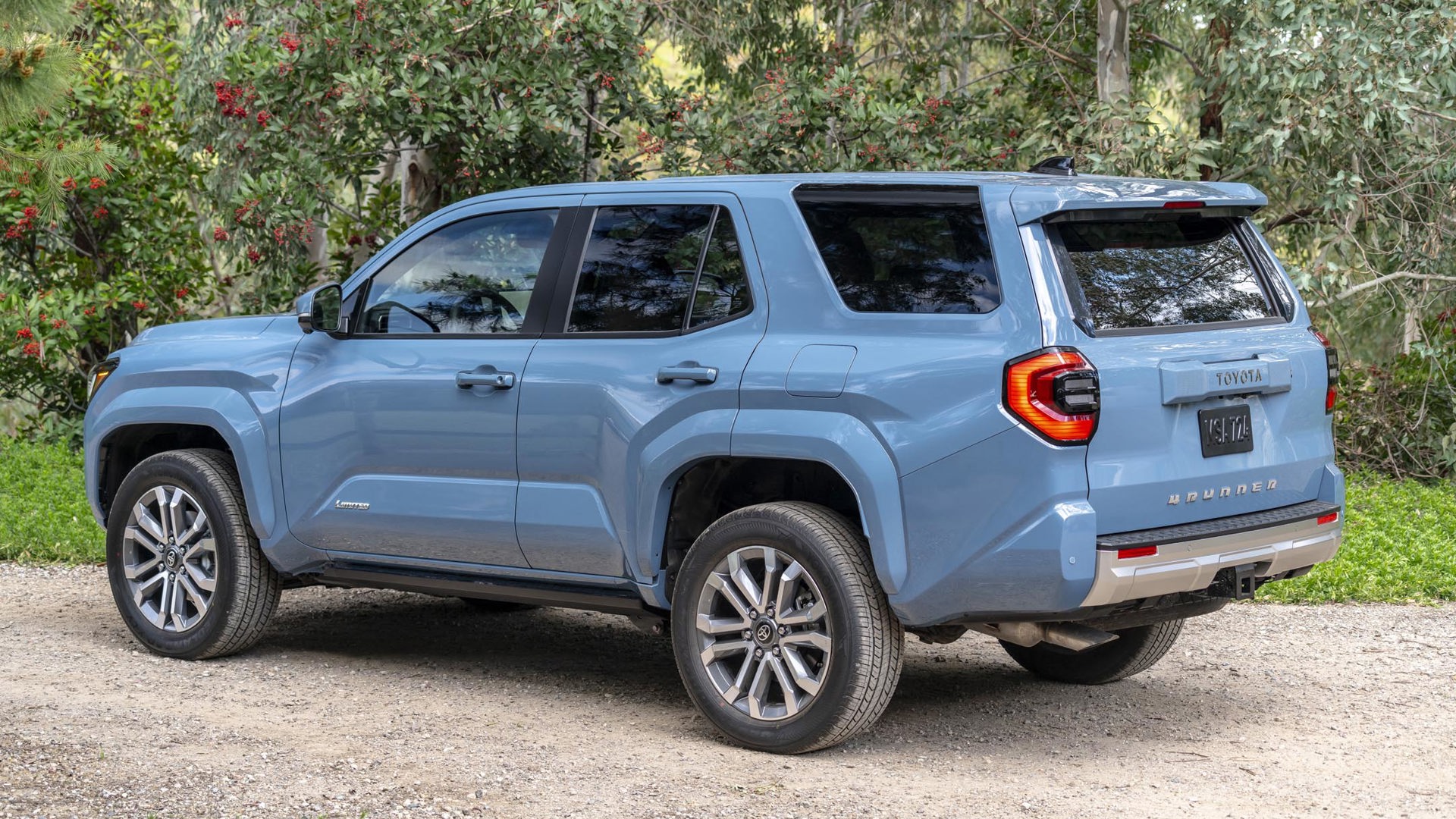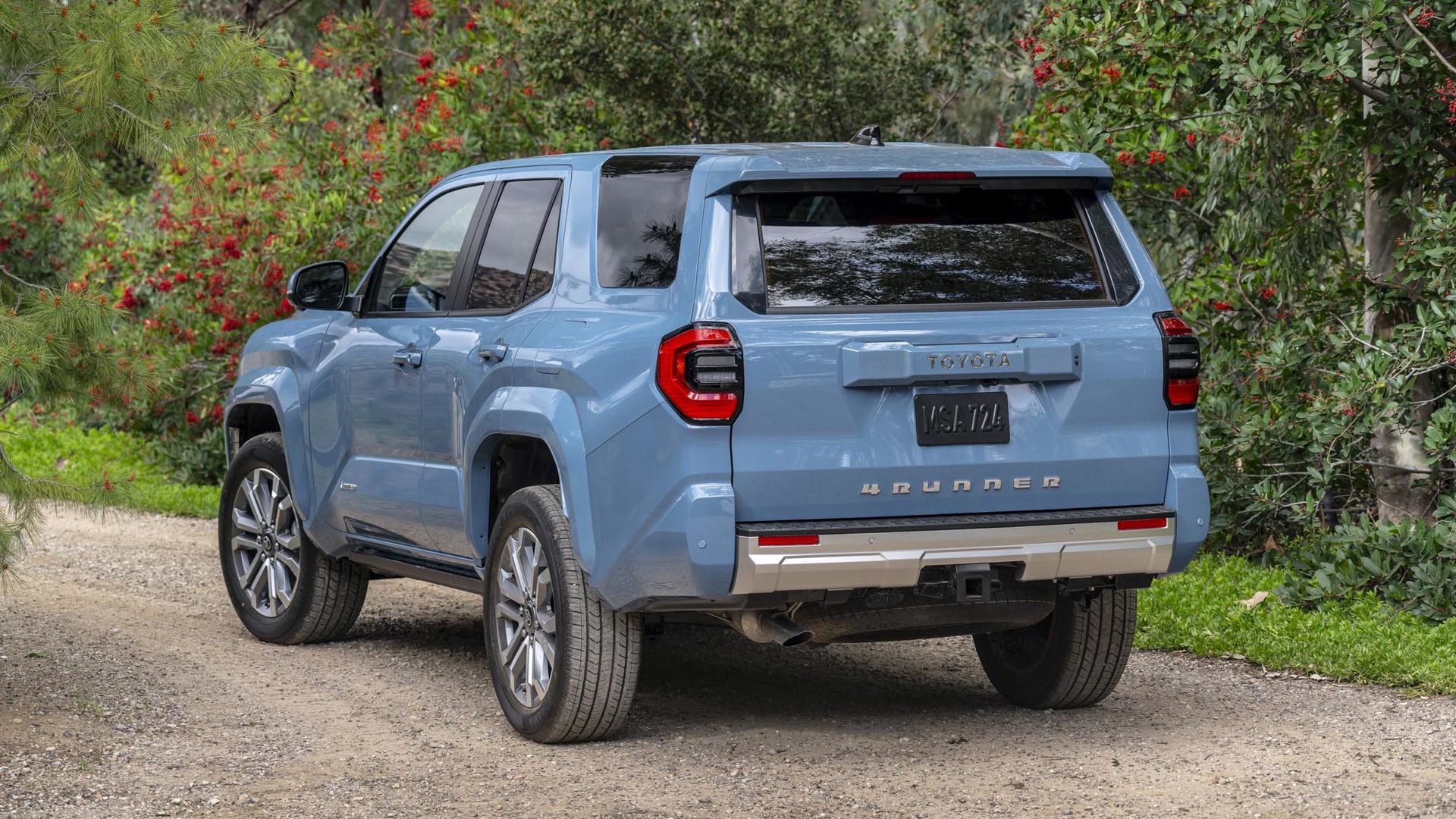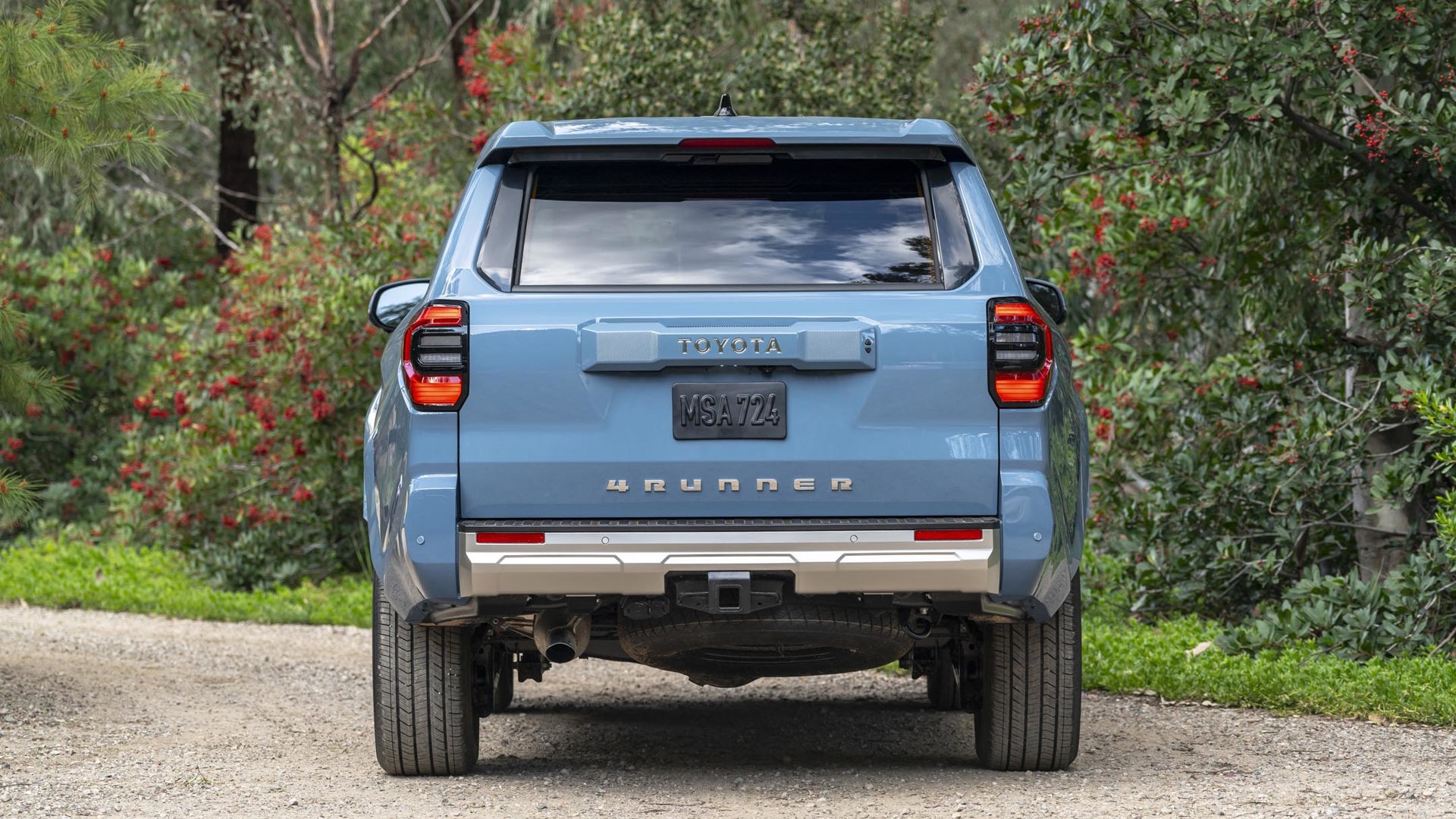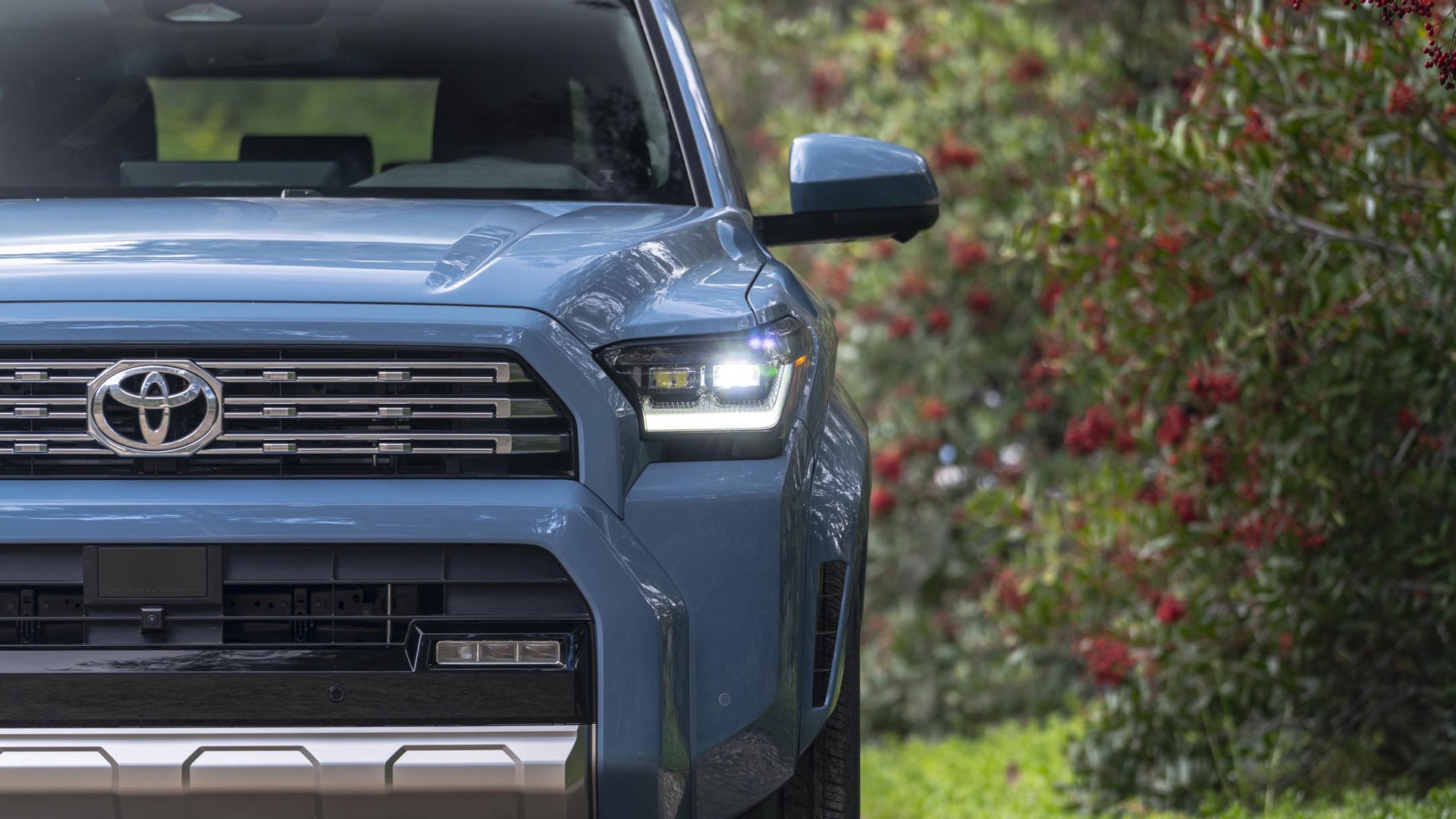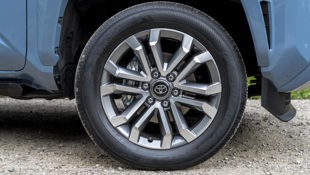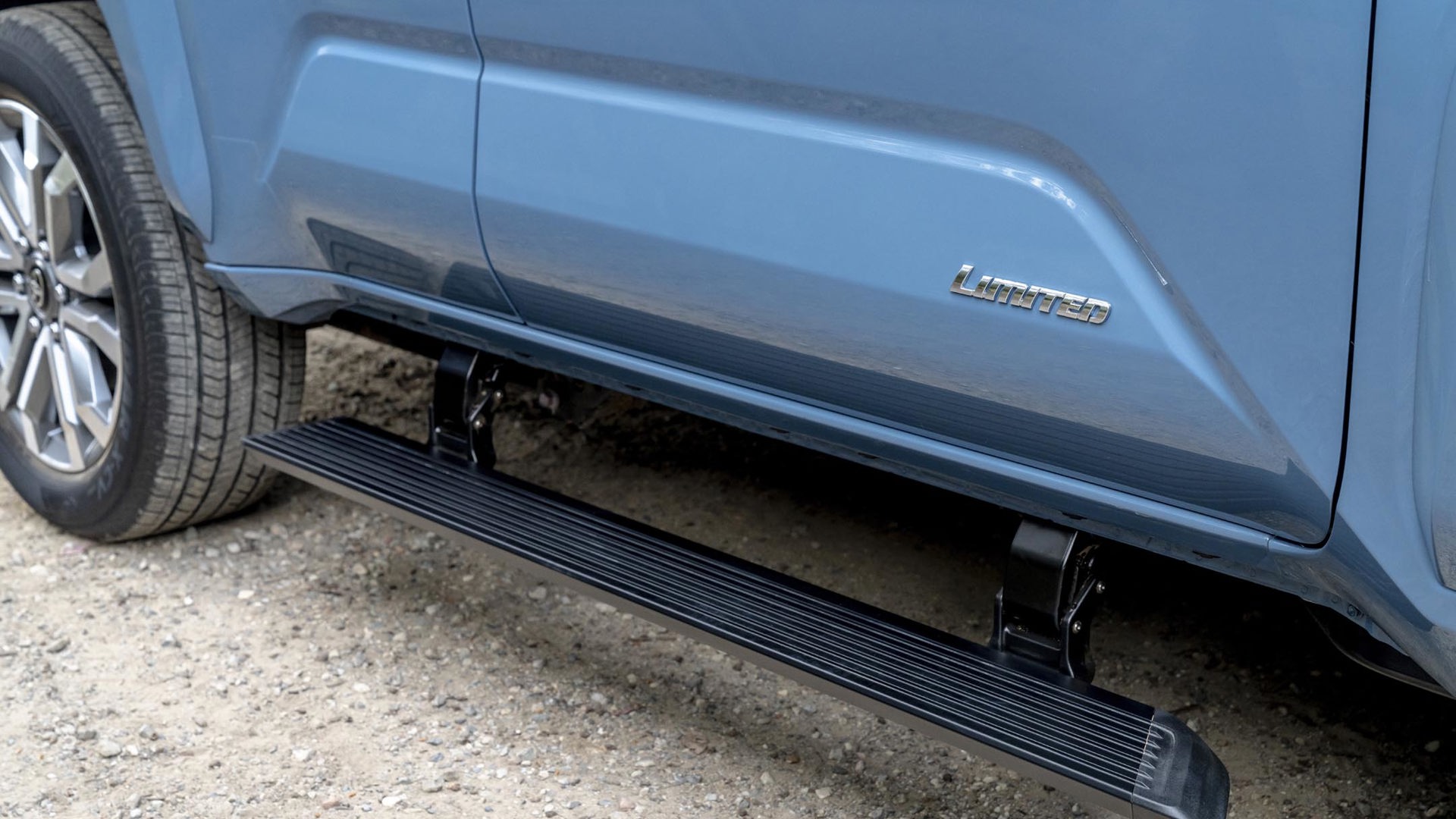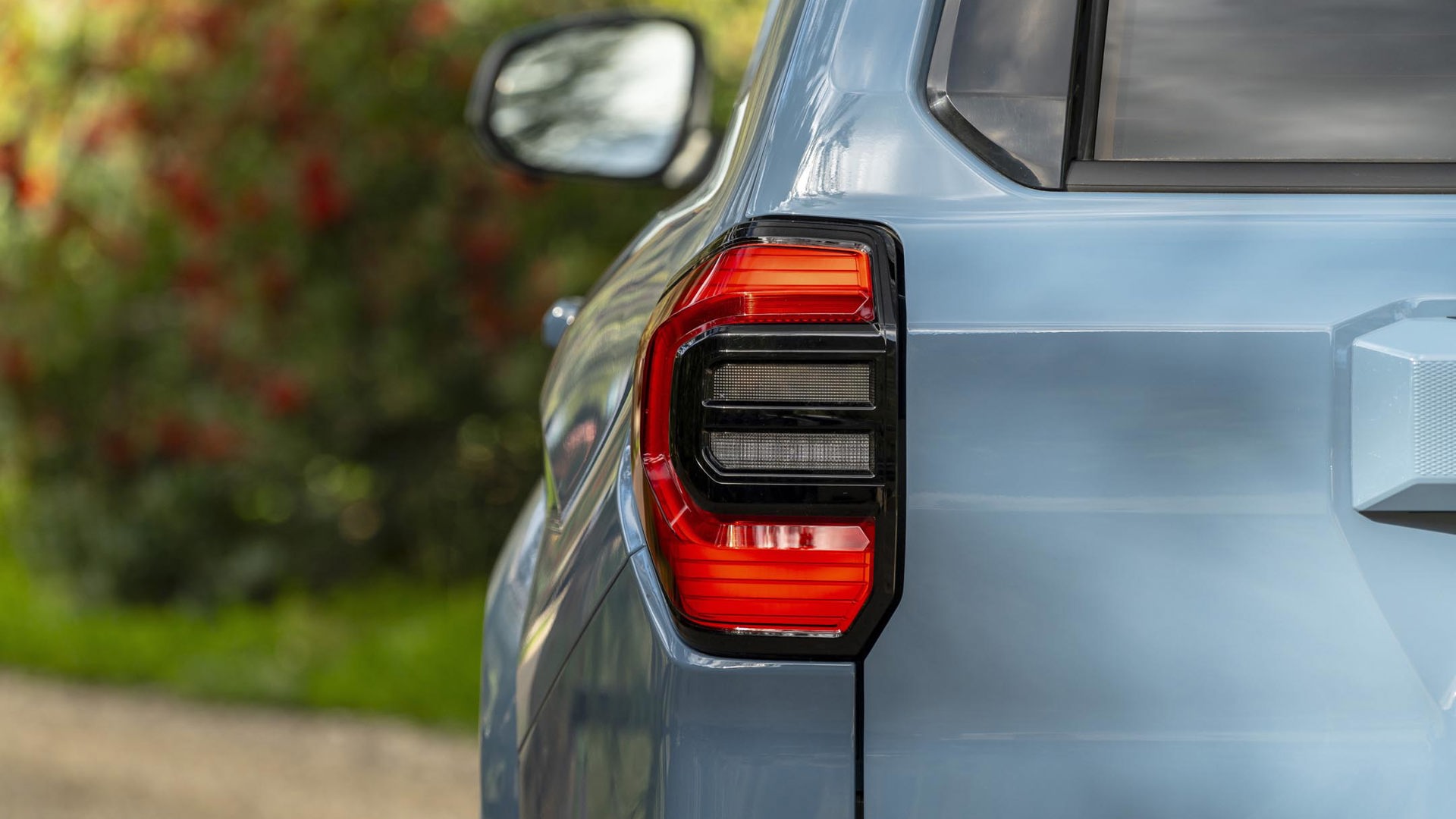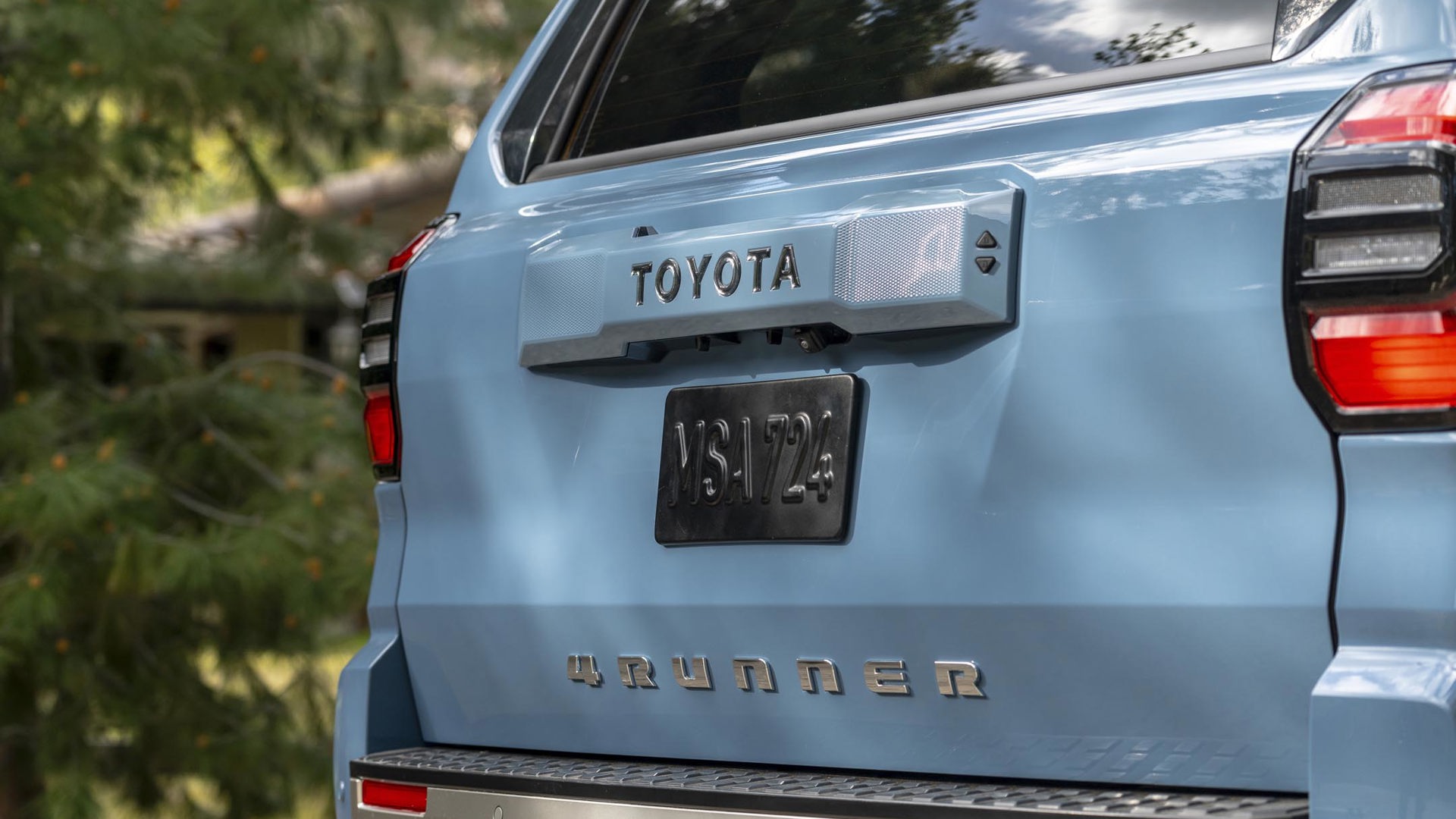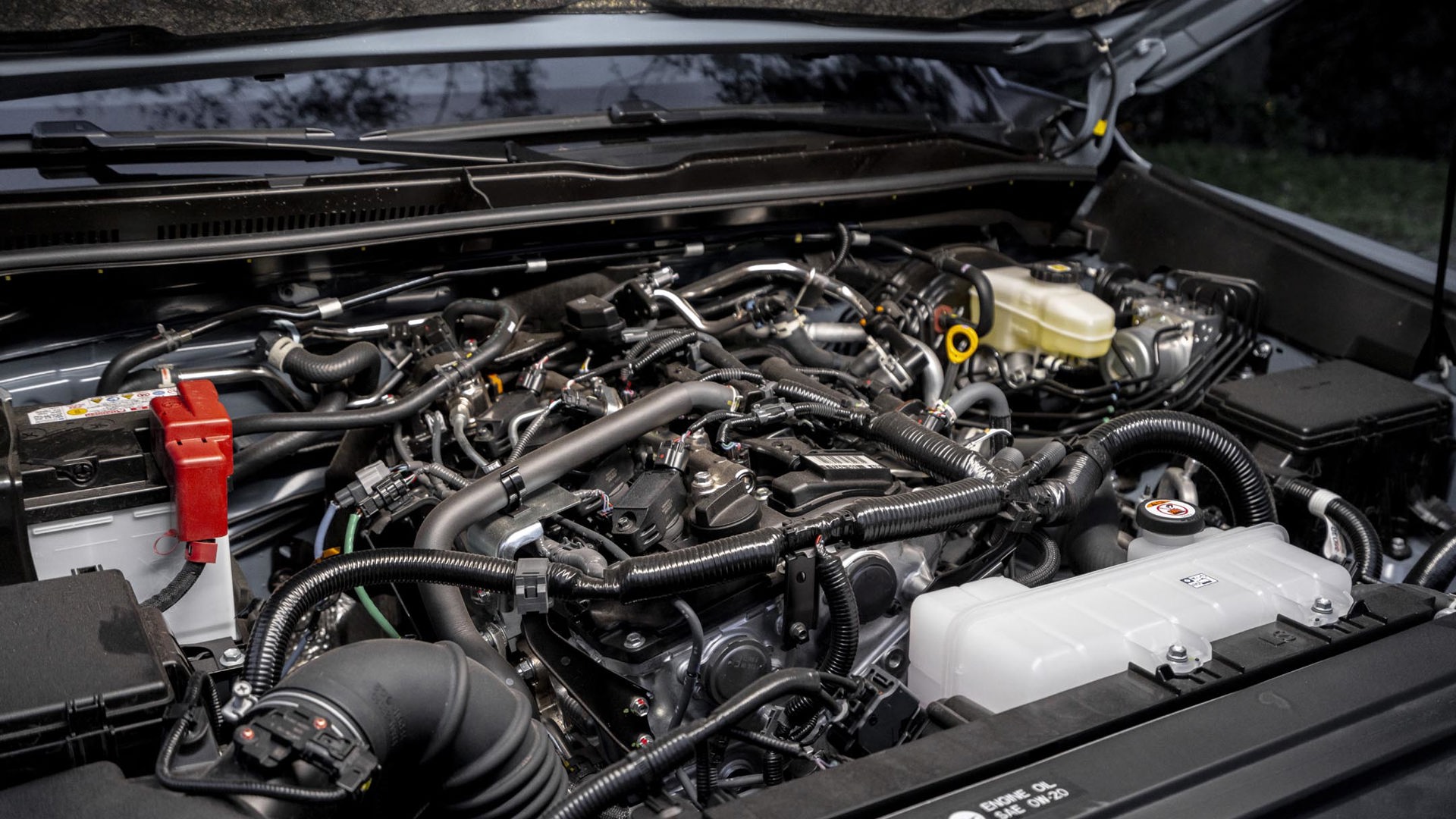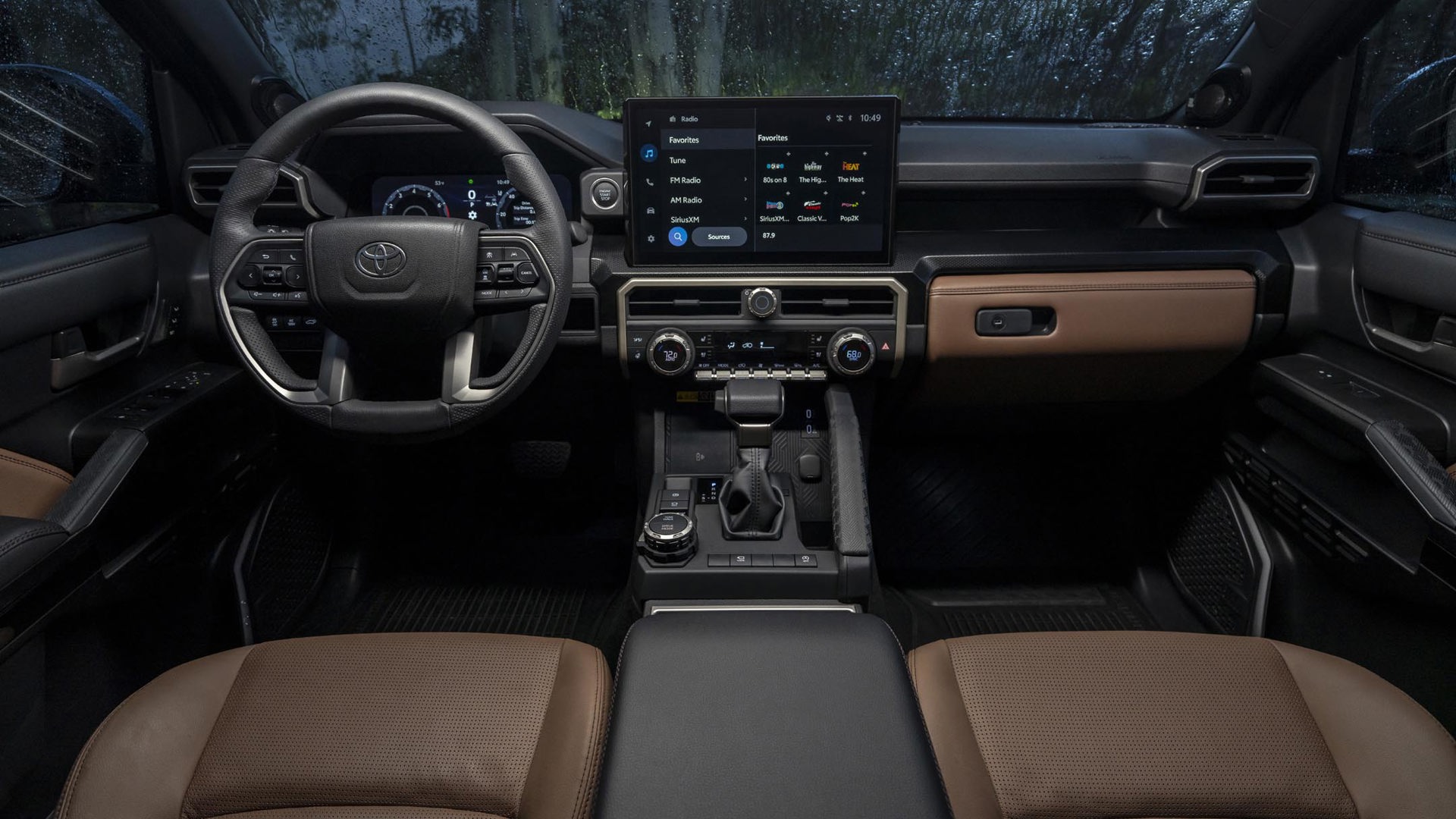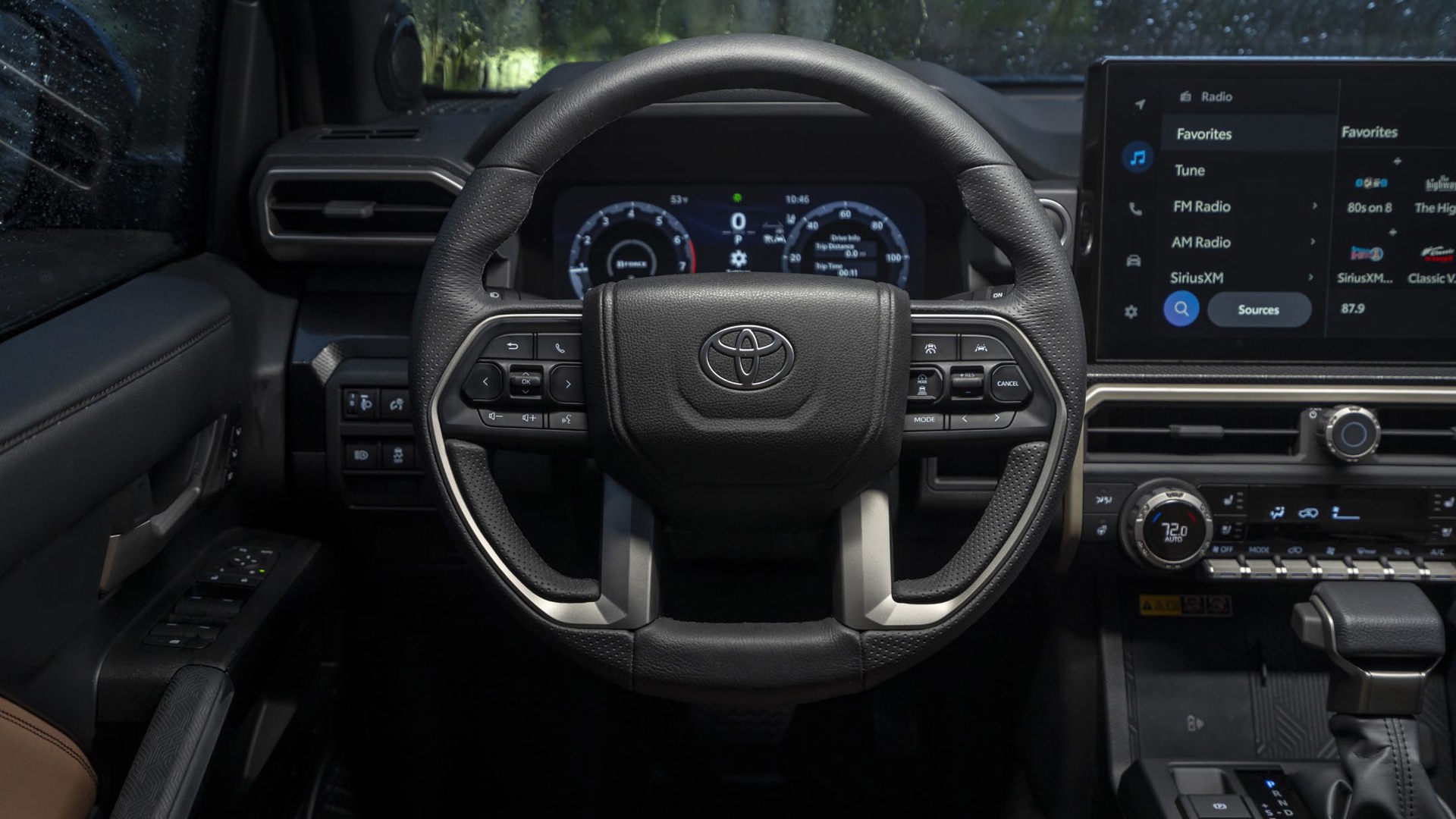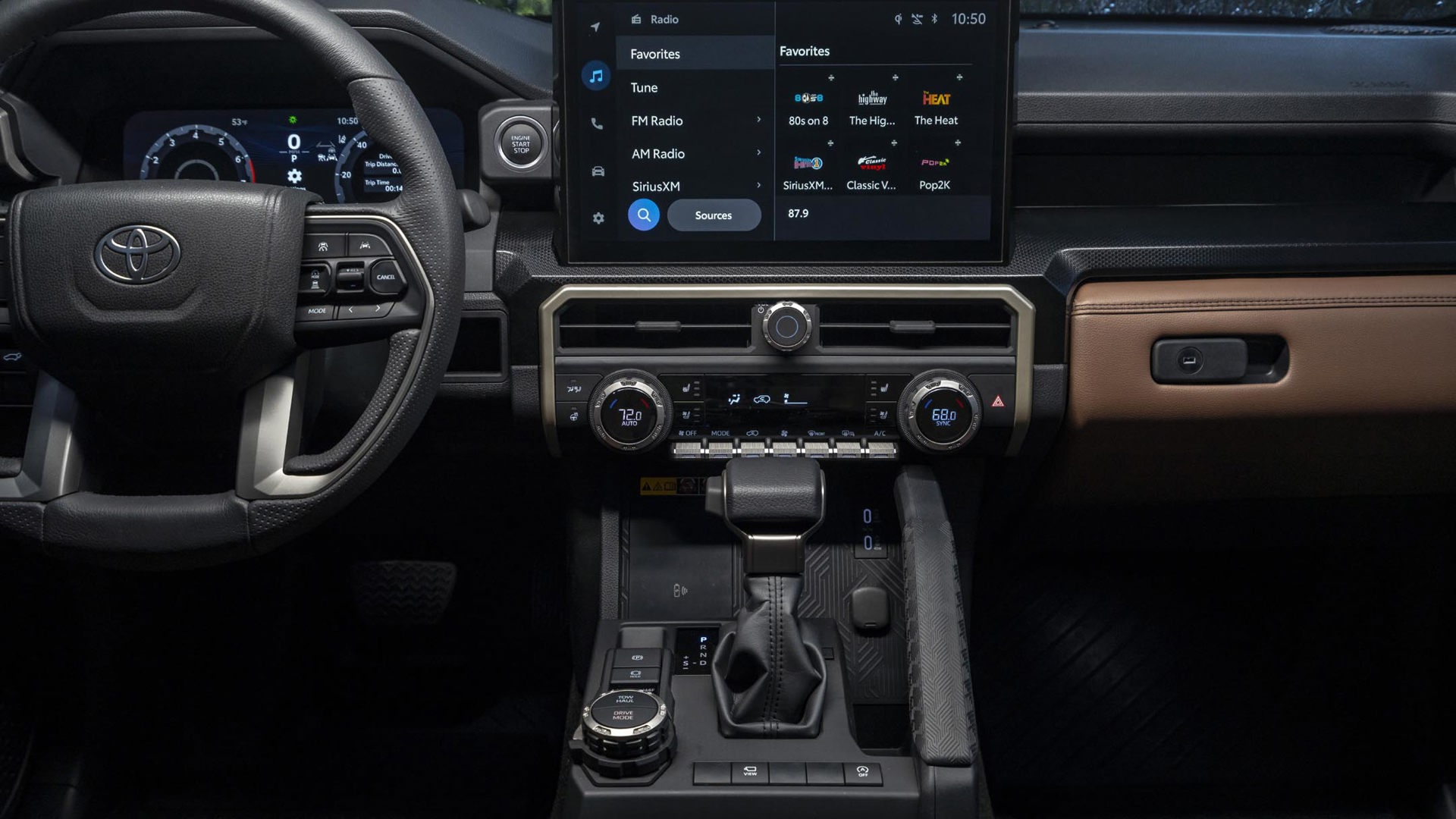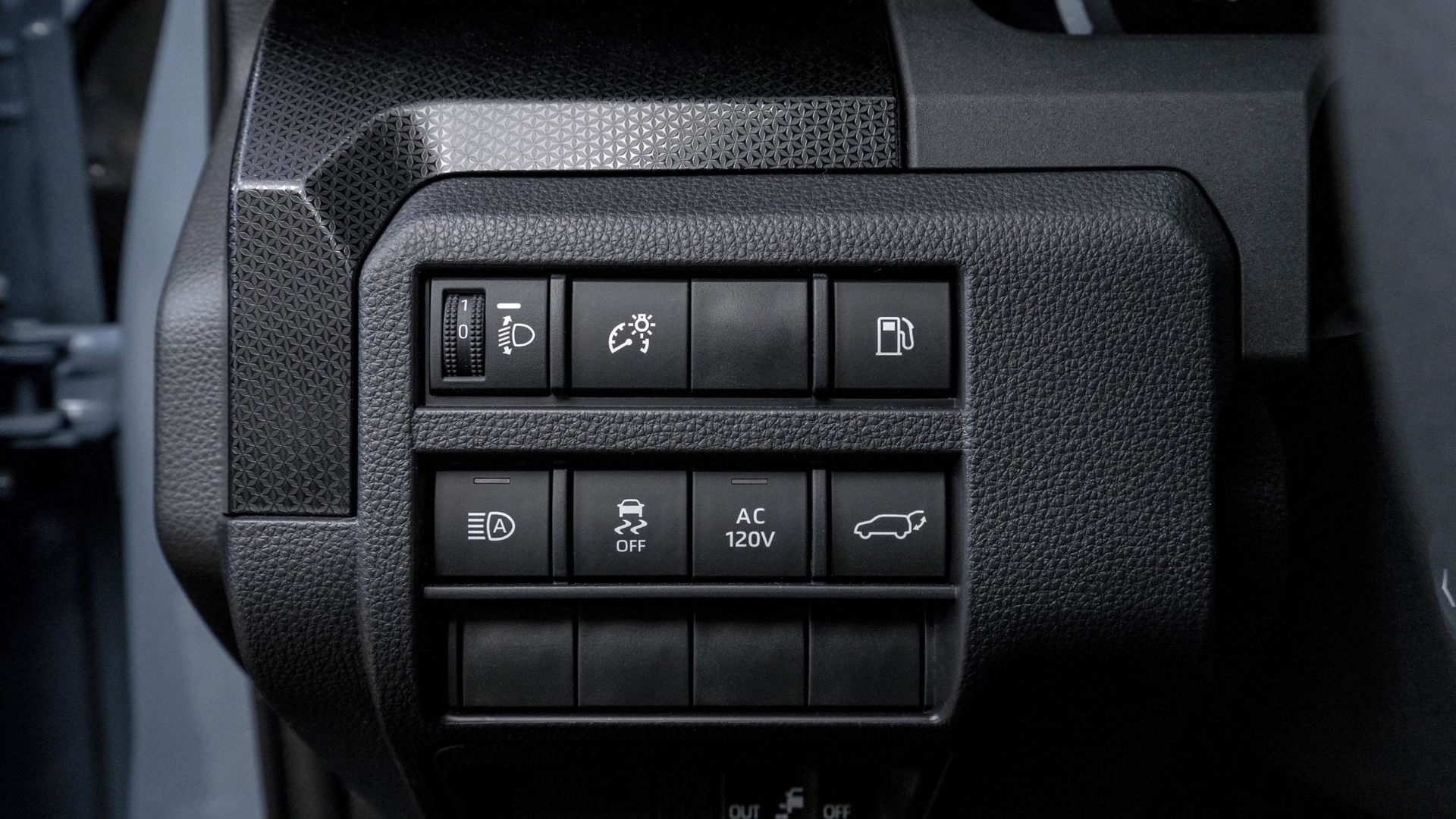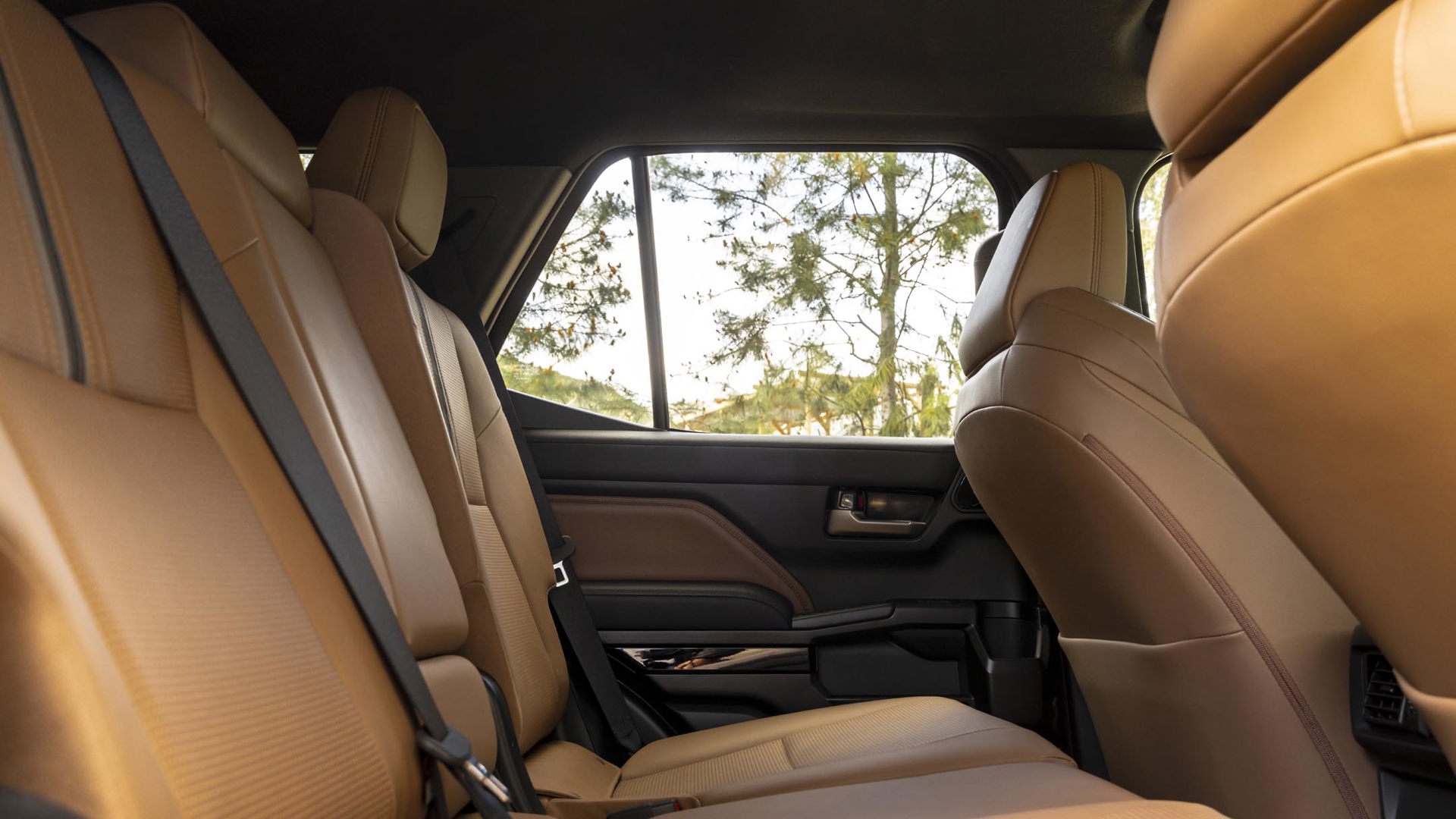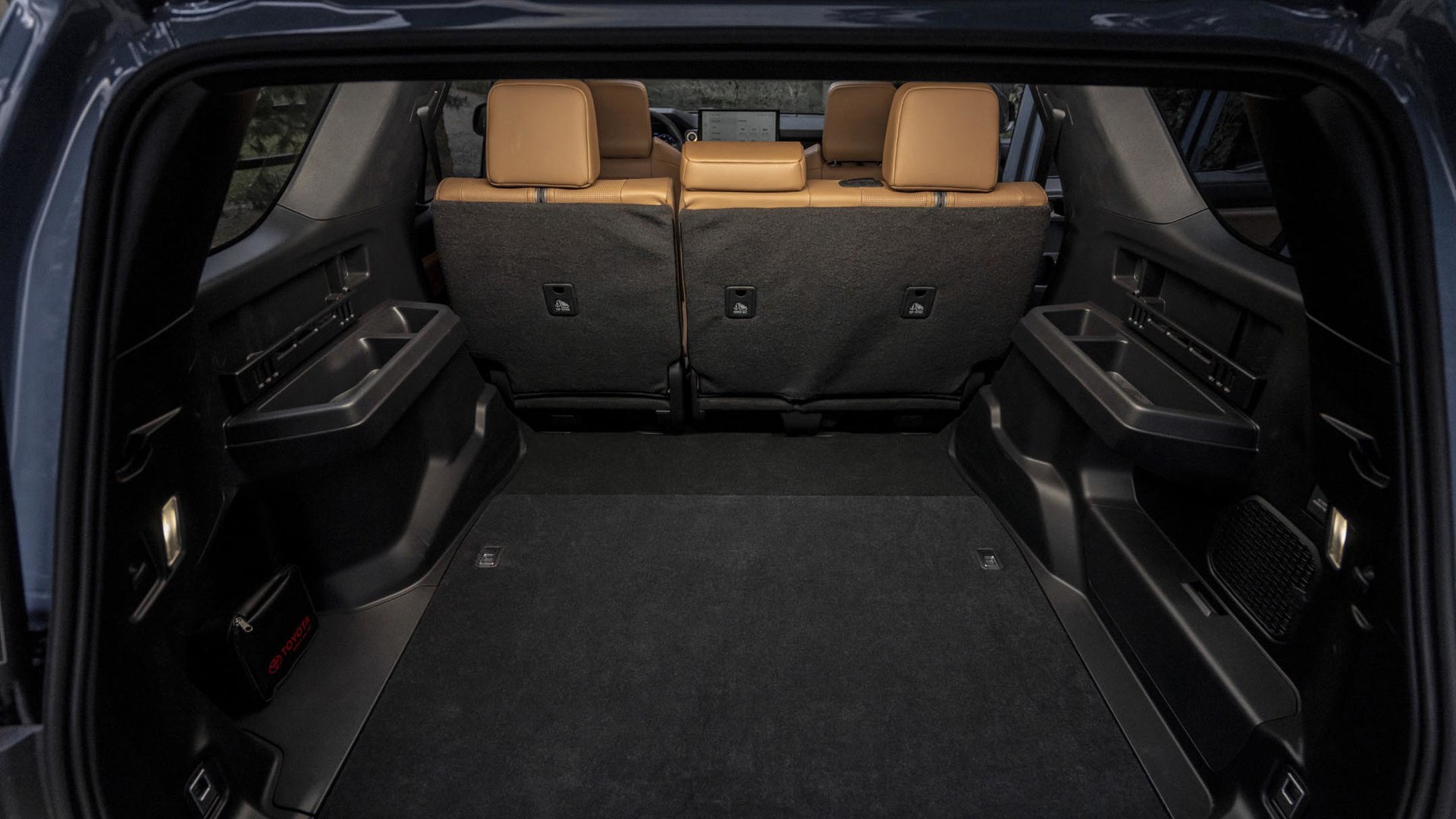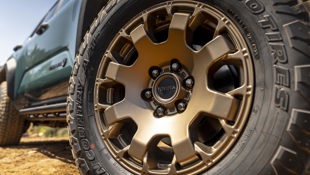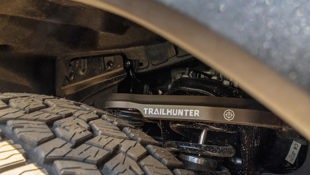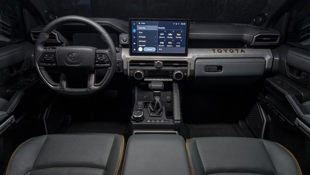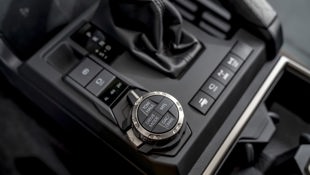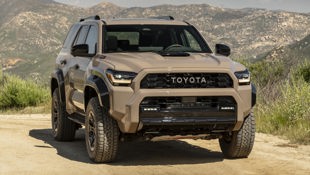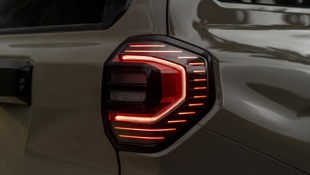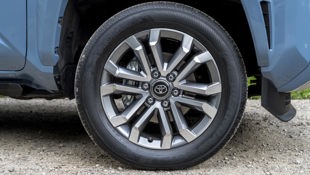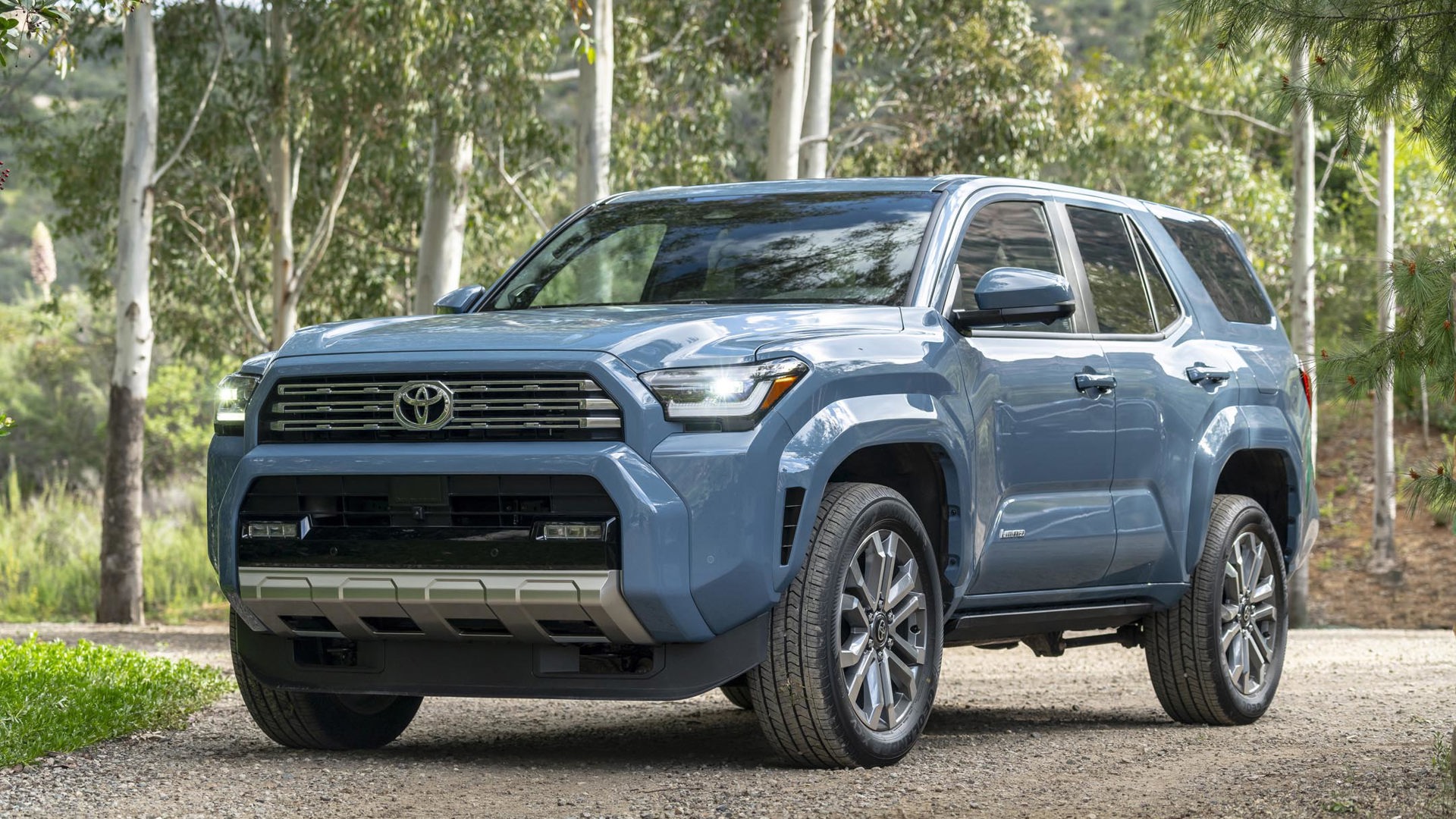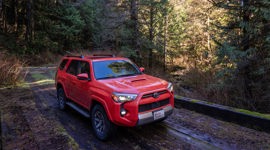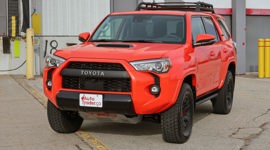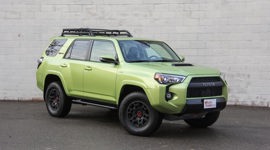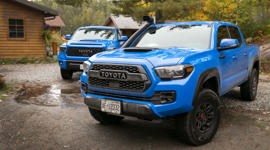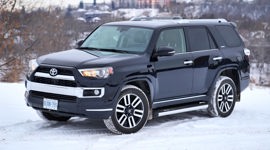The 4Runner is Toyota’s Mercedes G-Class, its Jeep Wrangler. Or, in the sense of spiritual importance to the brand, it’s the company’s Mazda MX-5 or Nissan GT-R. Even more so than the Tacoma, it’s the vehicle the most ardent fans don’t want the company to mess with, and for the past fifteen years, Toyota has stayed the course with its beloved SUV. For 2025, it’s finally charting a new heading.
New Powertrains Boast More Power, Better Fuel Efficiency
Now riding on a box ladder frame shared with the Tacoma and Tundra pickup trucks (as well as the larger Sequoia SUV), the new 4Runner also gets two new four-cylinder powertrains. Gone is the aging 4.0L V6 and five-speed automatic transmission, which will not entirely be missed. The previous-generation Tacoma had already changed to a 3.5L V6 and six-speed automatic for improved fuel economy, and the out-going 4Runner was both thirsty and somewhat sluggish to react on the road.
Both engine offerings are based on the 2.4L turbocharged four-cylinder found in the latest Tacoma. The base engine sees a mild bump in peak horsepower to 278 hp, and considerably more torque than the V6 at 315 lb-ft. Top of the range models can now be optioned with a mild hybrid version of this four-cylinder, with a 48-hp electric motor sandwiched between engine and transmission and a 1.87-kWh battery pack, for a peak of 326 hp and 426 lb-ft of grunt.
That last figure should make the off-road enthusiasts who buy the 4Runner sit up in their camping chairs. The standard eight-speed automatic gearbox still comes with a proper two-speed transfer case, and with both electrified and turbocharged torque for crawling, this could be the most capable 4Runner yet. Obviously, sacrificing the V6 will make for less smoothness, but the 4Runner was never a Lexus product anyway.
Toyota claims the new ladder chassis is stiffer and stronger, and it comes with an improved tow rating of up to 2,722 kg (6,000 lb). It’s also longer, with an increased wheelbase, and a third row folding seat is now an available option.
Trailhunter Trim Brings Off-Road Bona Fides
Every Canadian-spec 4Runner will be available with part-time or full-time 4x4, as was previously the case. In the TRD and new, most aggressive Trailhunter package, a locking centre differential helps handle especially slippery conditions. There’s also a terrain selection system for specifying whether your 4Runner is tackling snow, mud, or sand; and it functions in both high and low range.
With an approach angle of 32 degrees and departure angle of 24 degrees, the 4Runner is now better able to keep up with the Jeeps in your weekend off-road convoy when facing down a washout. Another new feature is the ability to disconnect the stabilizer bar at the push of a button, which allows for greater articulation of the wheels. Toyota has also added an optional terrain view camera for the multifunction centre display, lest you plow your brand-new 4Runner right into a hidden stump.
Previously, the TRD Pro model stood at the top of the off-road range for the 4Runner, but the aforementioned Trailhunter now provides even more capability. Basically, Toyota is here offering factory support for the kind of modifications that some 4Runners already have, with Old Man Emu 2.5-inch shock absorbers and 33-inch Toyo Open Country tires. The Trailhunter rides 1.5 inches higher up front and 2 inches higher in the rear than the standard 4Runner; and also comes with an ARB roof rack, LED lightbar, high-rise air intake, rock rails and skid plates underneath, and a 2,400-watt inverter with outlets in the cabin and in the rear. It’s a heck of a rig.
Technology Upgrades and Modern Amenities
Also newly available is the Platinum package, which gussies up the 4Runner with a little more tech over the Limited model. Frankly, I’m not sure why you’d bother. However, Toyota offering broader choice is no bad thing.
Further, there are plenty of the expected technology upgrades through the rest of the 4Runner range. There’s a choice of 8- or 14-inch touchscreen depending on trim, and wireless Apple CarPlay and Android Auto are now available, with wireless charging. There are also more USB-C outlets throughout for passengers to charge their devices.
Safety is a key area for improvement for the 4Runner, which gets Toyota’s latest generation driver assists. Not everyone loves chimes and warnings, but Toyota deserves kudos here for making most of its safety aids standard on its models, rather than bundling them with expensive technology packages. It’s the case here with all new 4Runners, which come with pre-collision and pedestrian detection systems, a lane-departure alert, and even a system that will bring the vehicle to a complete stop if a driver becomes unresponsive.
Blind-spot monitoring and cross-traffic alert are optional extras, but you do get some other handy driver assist features here. The new automated cruise control operates across a full range of speeds, and is paired with something Toyota calls “lane tracing,” which aims to keep the vehicles centred in the lane. The 4Runner wasn’t as prone to wandering from side to side as something like a Jeep Wrangler, but these new systems will take a lot of the work out of getting to the actual trailhead.
The Sixth-Generation 4Runner, in a Nutshell
Bigger, faster, more fuel-efficient, and with more room to carry passengers, the new 4Runner is hugely improved in all dimensions. The Trailhunter especially should please Toyota’s really hardcore off-road fans, and while there is sure to be plenty of moaning about the loss of the tried-and-true 4.0L V6, that complaining should stop after the first couple of trips to the pump. Besides which, Toyota’s hybrid systems are also well proved, and there are plenty of old four-cylinder 4Runners still plying the roads (slowly, but surely).
We end with the 4Runner’s power rear tailgate window. Toyota could easily have done away with this feature for something more conventional, probably with considerable corporate savings.
But to have done so would be to fundamentally misunderstand the 4Runner’s customer base. A power rear window seems like no big deal, but it’s something that fifteen years’ worth of people buying the previous generation of 4Runner expect, and even more if you start counting up the earlier models.
People don’t like it when the recipes at their favourite restaurant change, just as they don’t like it when their favourite band only plays the new songs on tour. We like the familiar, especially when it’s a vehicle built for function first, form second.
But a more efficient 4Runner that maintains its character has a much better business case than, say, trying to sell Challenger Hellcat fans an electrified Dodge. Toyota had to change the 4Runner. But it has done so in a manner that any off-roader would approve of. When you’re not sure what’s up ahead, you take your time, and keep your inputs gentle.
